In the 1910s, a journey up the island of Manhattan along the path of Broadway was a journey through a series of distinct and different worlds. The famous street changed its character completely every couple of miles, from the shadowy canyons of finance at its southern tip to the bustling retail hubs of midtown and the grand residential boulevard of the Upper West Side.
At its start in Lower Manhattan, Broadway was the central artery of American finance and commerce. Here, the street was a canyon carved between towering new skyscrapers. The Woolworth Building, completed in 1913, was the tallest building in the world, its Gothic-inspired spire dominating the skyline. The street was crowded with businessmen, stockbrokers, and thousands of clerical workers. It was also the city’s ceremonial parade route, the site of the first “ticker-tape” parades, where office workers would shower confetti on visiting dignitaries. The historic Trinity Church stood in stark contrast, its old stone churchyard a quiet island amidst the frantic pace of business.
Moving north, past the massive City Hall, Broadway transformed into a wholesale district. The street was a loud, chaotic corridor filled with horse-drawn drays and the first motorized trucks. These vehicles were loaded with textiles, dry goods, and other merchandise from the warehouses that lined the side streets. The sidewalks were crowded with merchants and laborers, and the air was filled with the noise of commerce.
Read more
Further uptown, from Union Square to Madison Square, Broadway cut through the shopping district known as the “Ladies’ Mile.” This section was lined with grand, cast-iron department stores like Lord & Taylor and B. Altman. While the retail center of gravity was starting to shift north, this area was still a major destination for shoppers looking for fine clothing, furniture, and housewares.
The new heart of retail was at 34th Street in Herald Square. Here, Broadway was dominated by the enormous, block-long Macy’s department store and the distinctive Venetian-style building of the New York Herald newspaper. This intersection was one of the busiest in the city, a bustling hub of shoppers, streetcars, and early automobile traffic.
It was just north of 42nd Street that Broadway earned its nickname, “The Great White Way.” This was the theater district, a dazzling world of its own. The street was lined with ornate theaters, the first grand movie palaces, and bright, animated electric signs. At night, this section of Broadway was the center of the city’s nightlife, attracting crowds to its musical comedies, vaudeville shows, and new cabarets.
Past Columbus Circle, Broadway transformed again. As it moved through the Upper West Side, it became a wide, grand residential boulevard. The street was lined with large, new apartment buildings, designed for the city’s growing middle and upper classes. It was a quieter, more domestic version of Broadway, a world away from the canyons of commerce downtown.


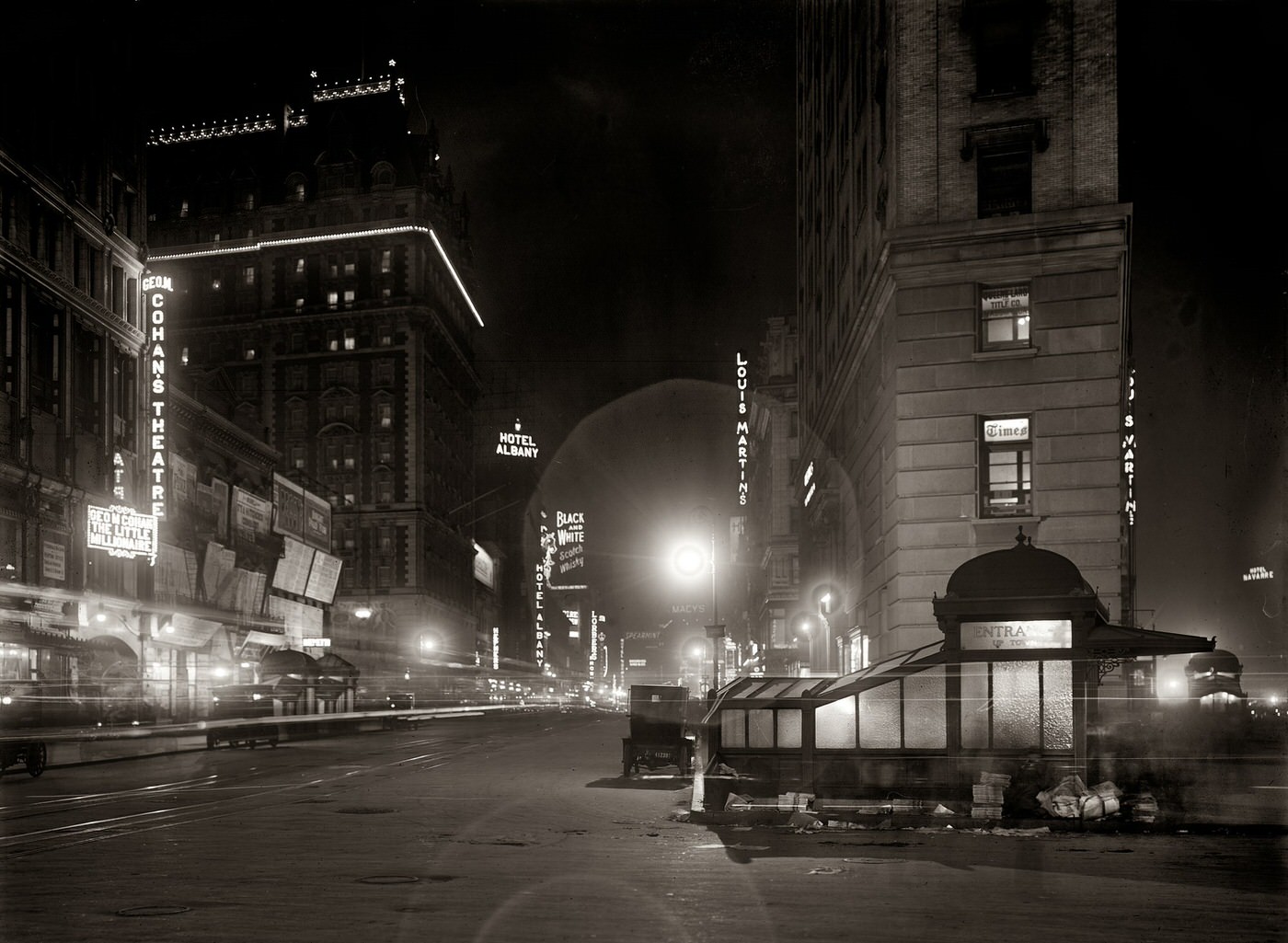
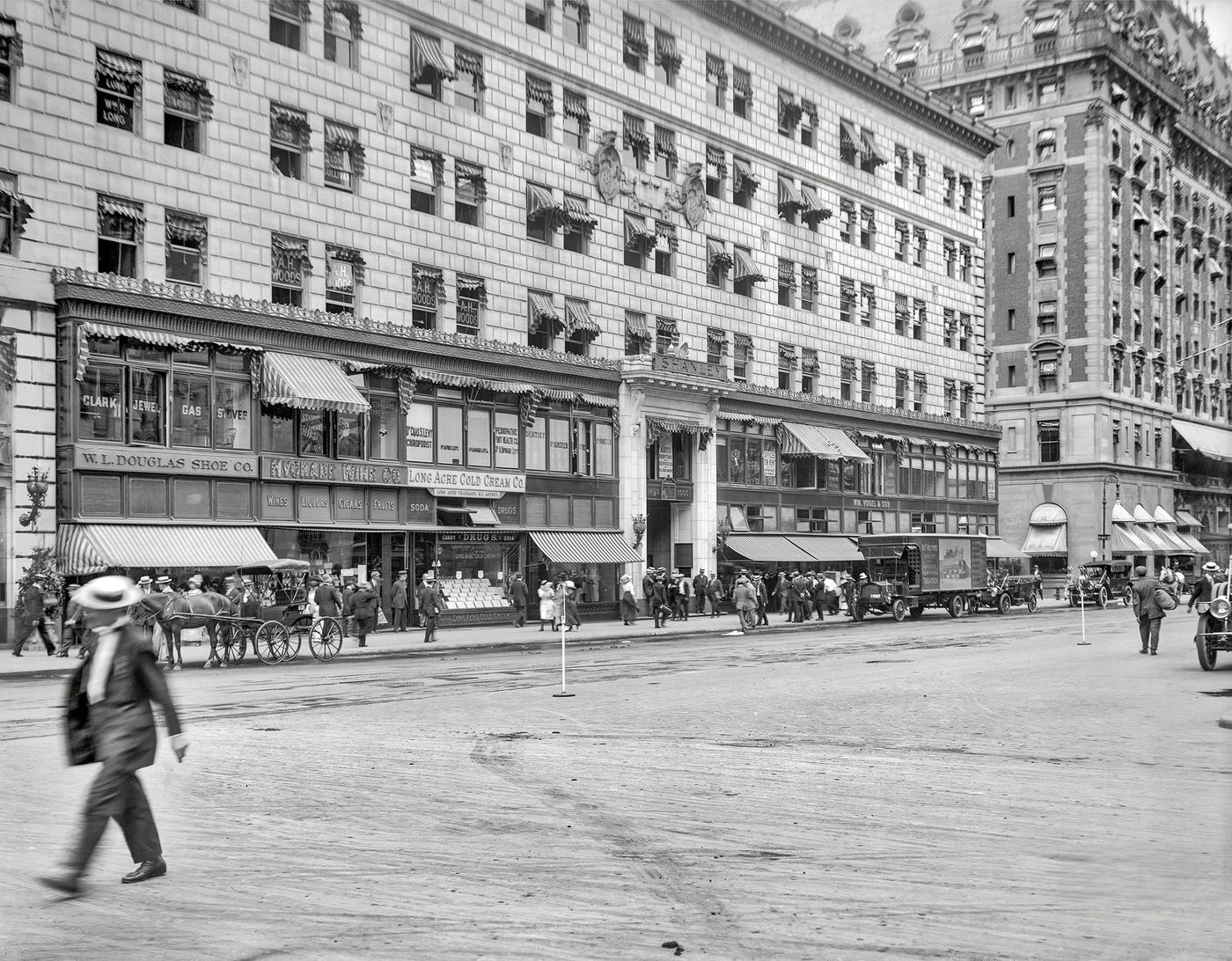
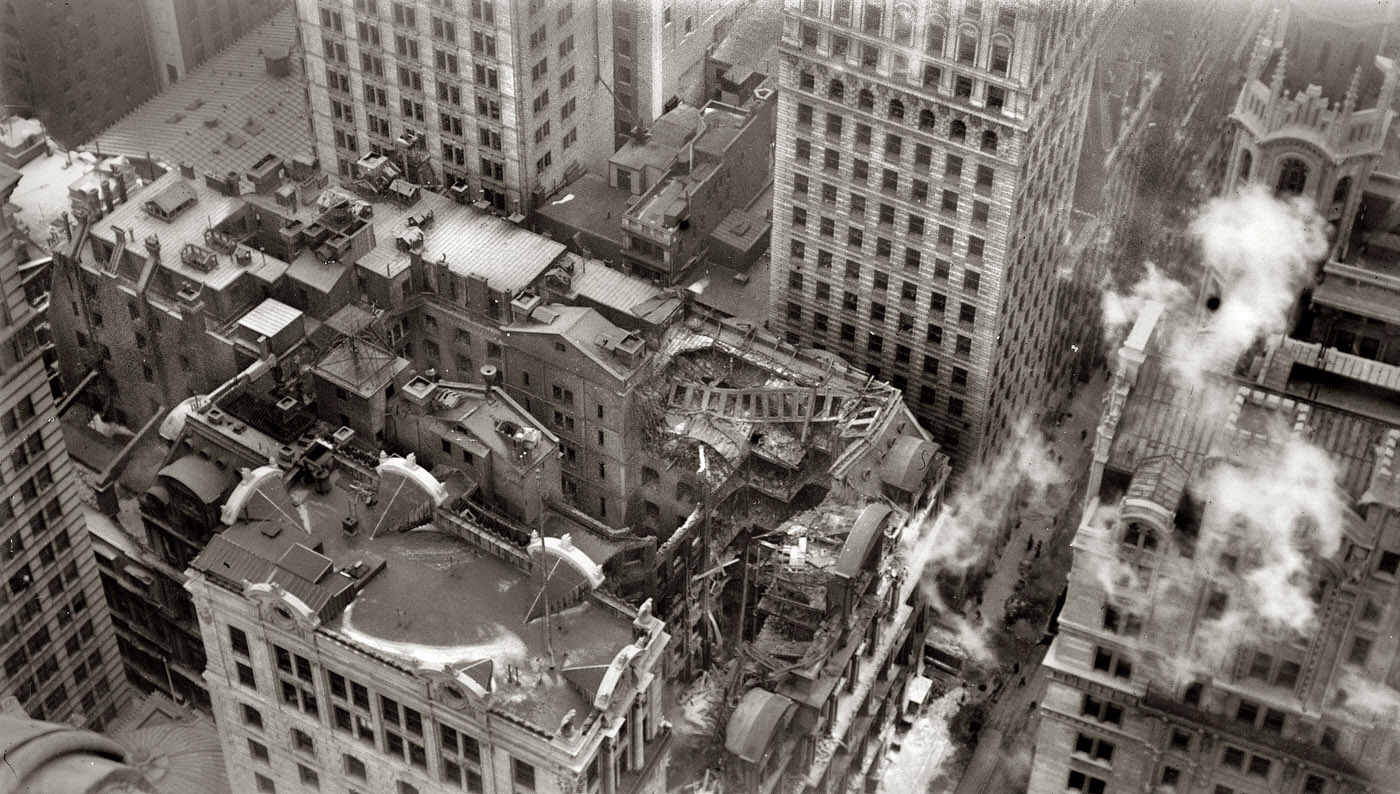
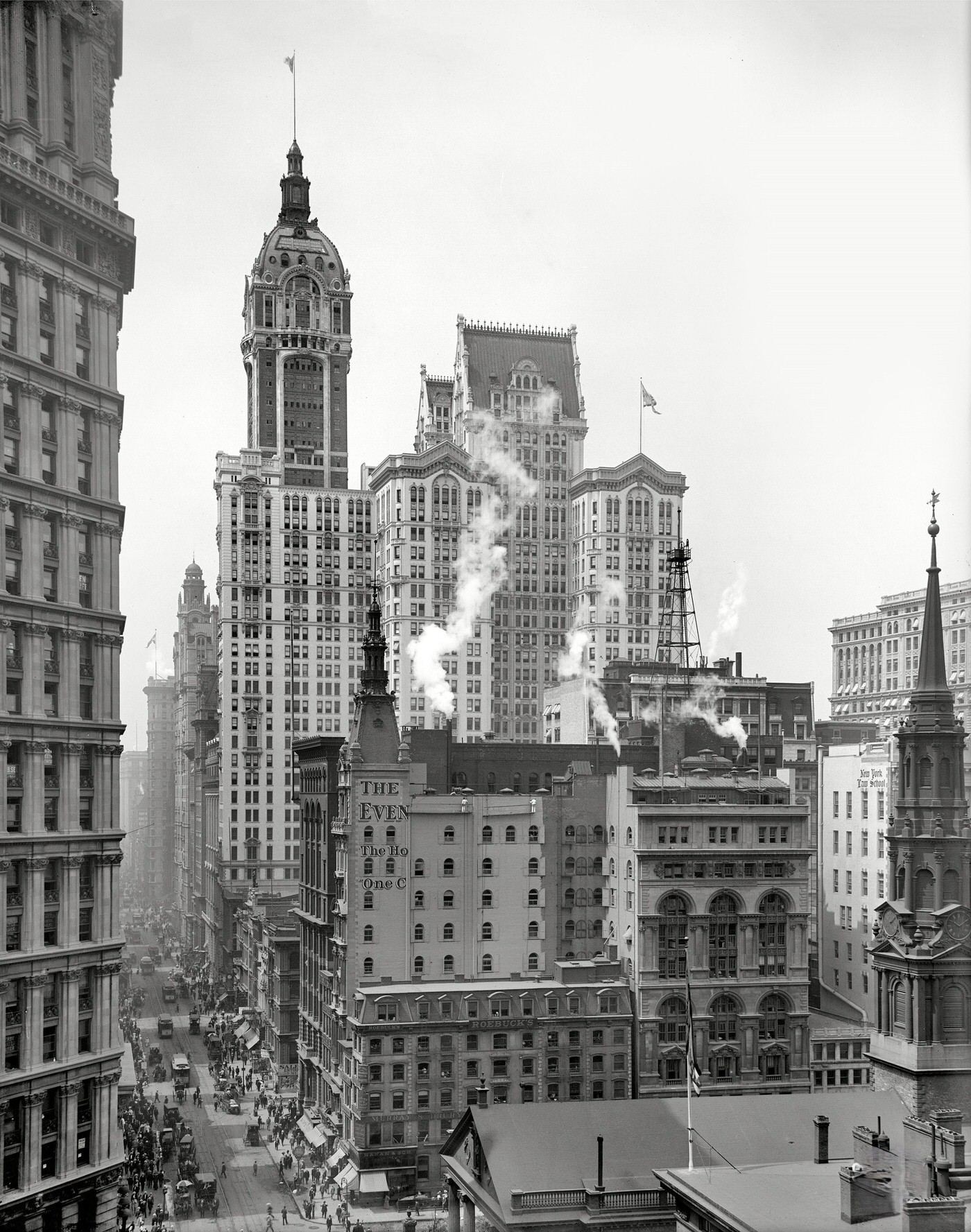
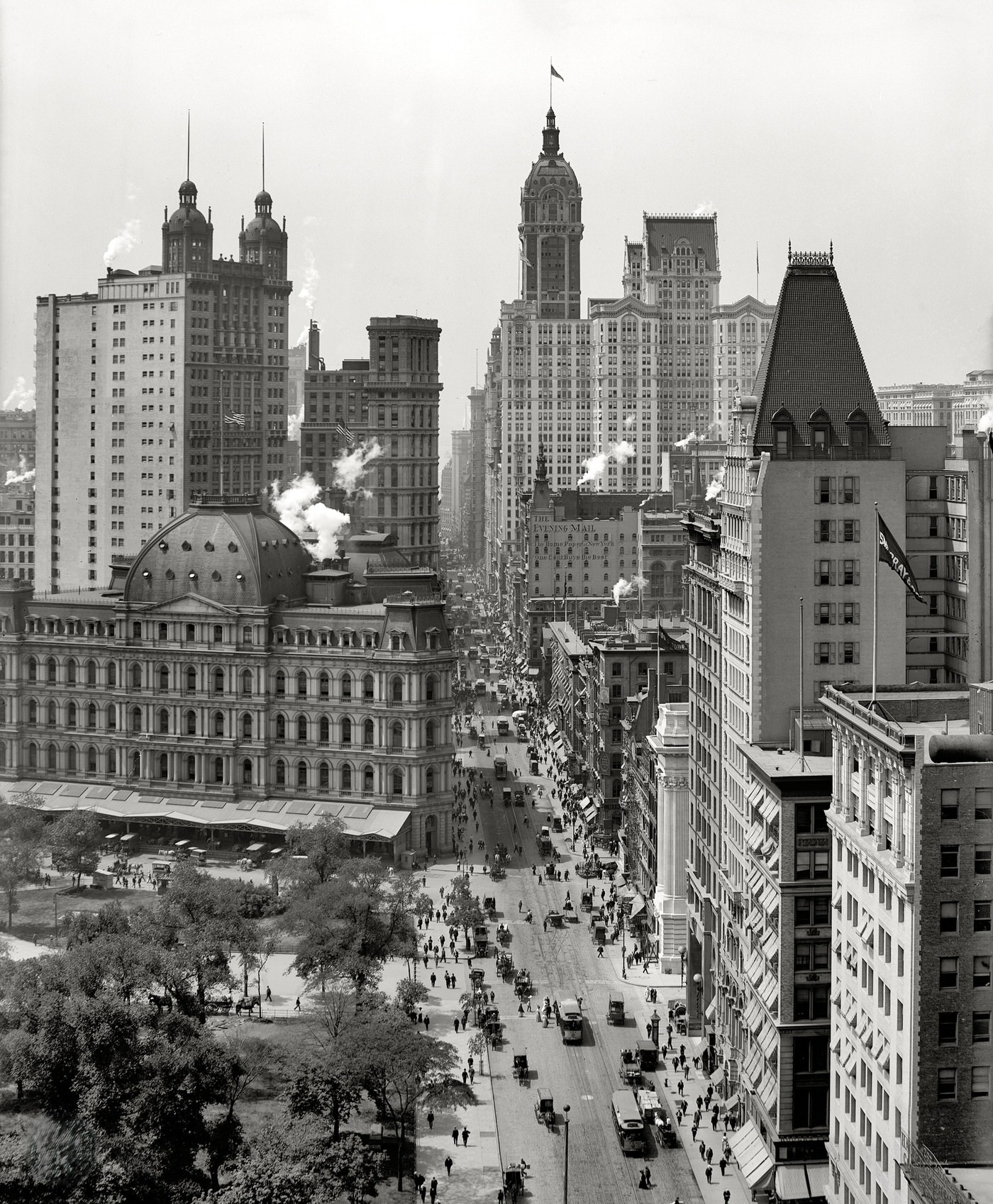
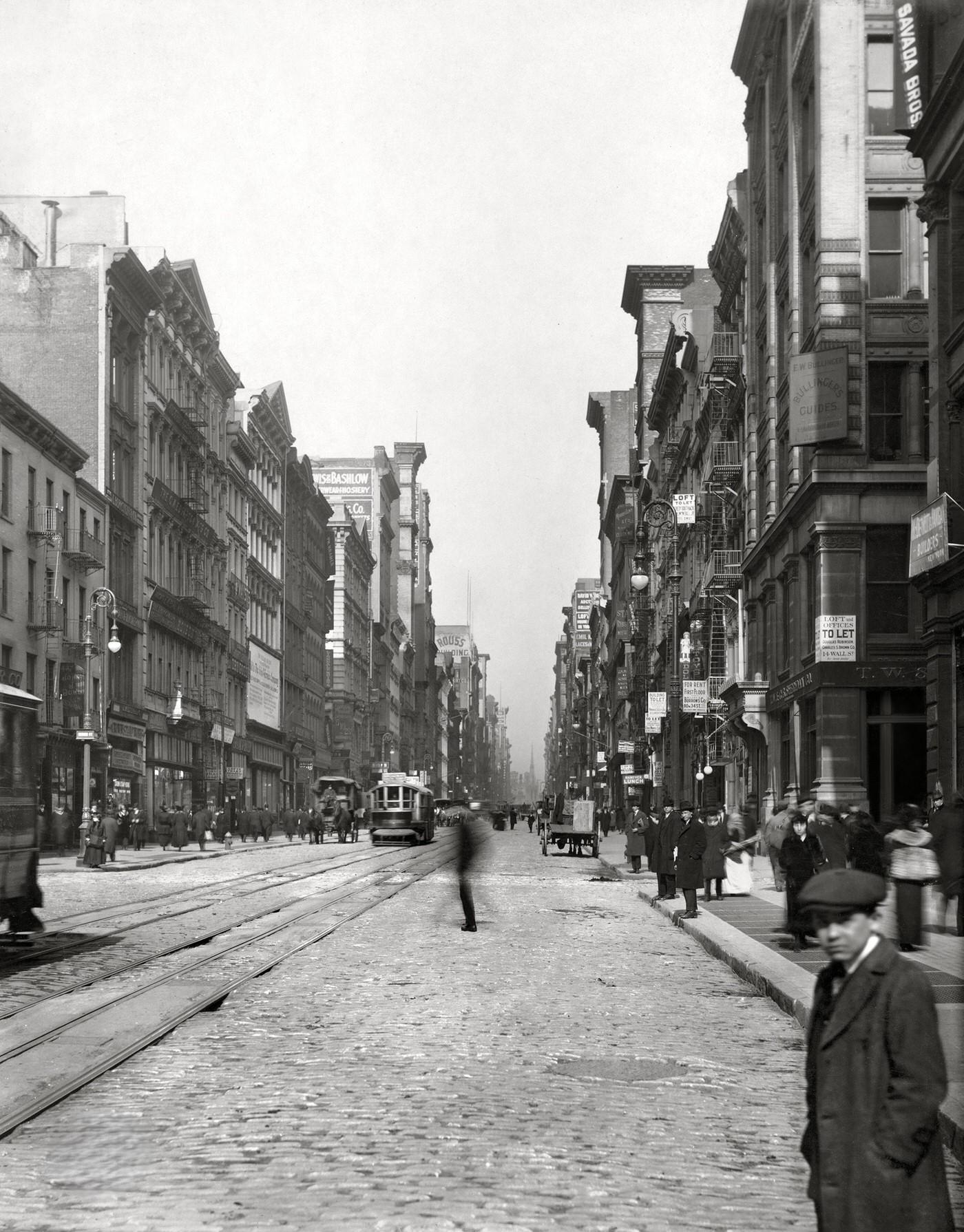
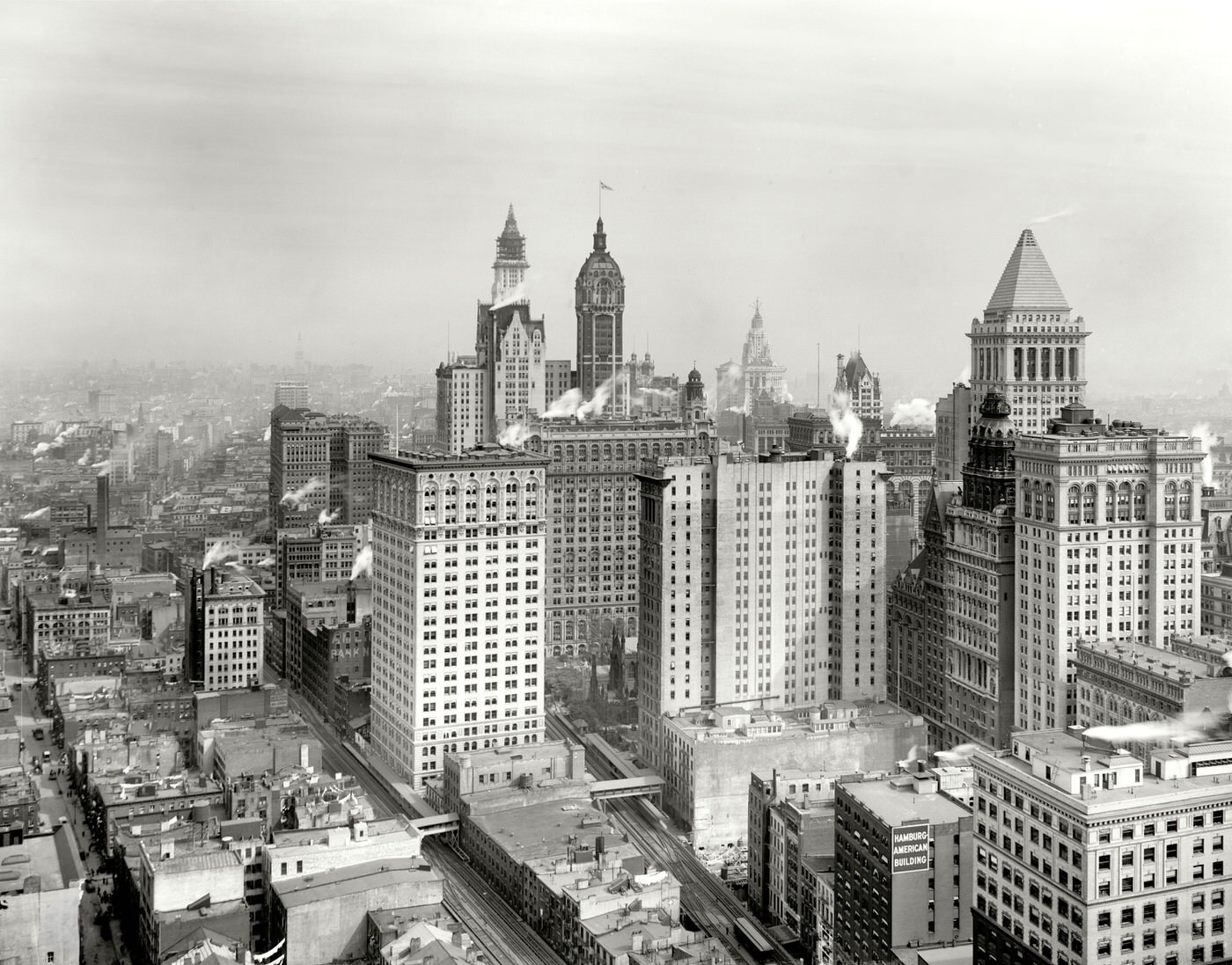
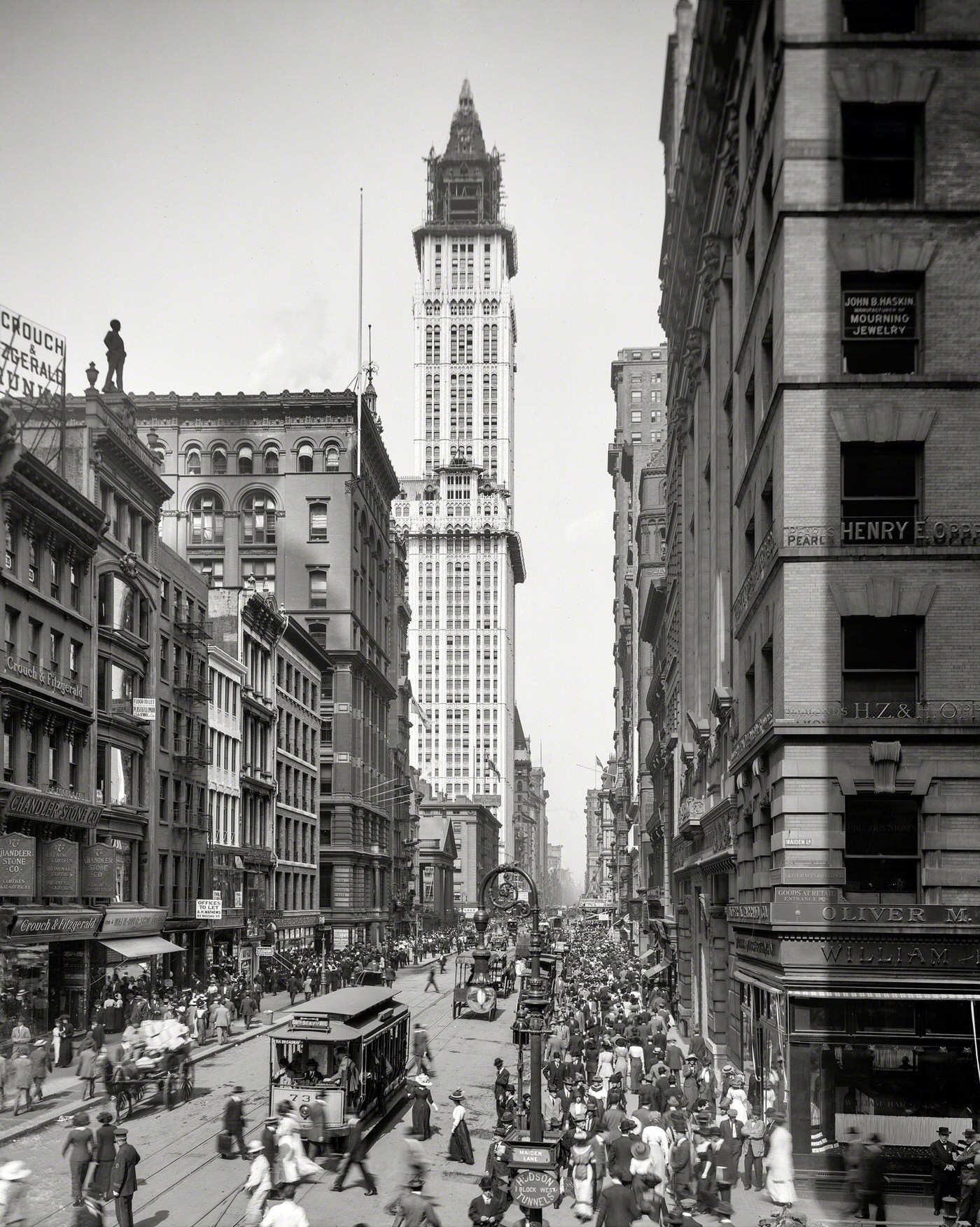
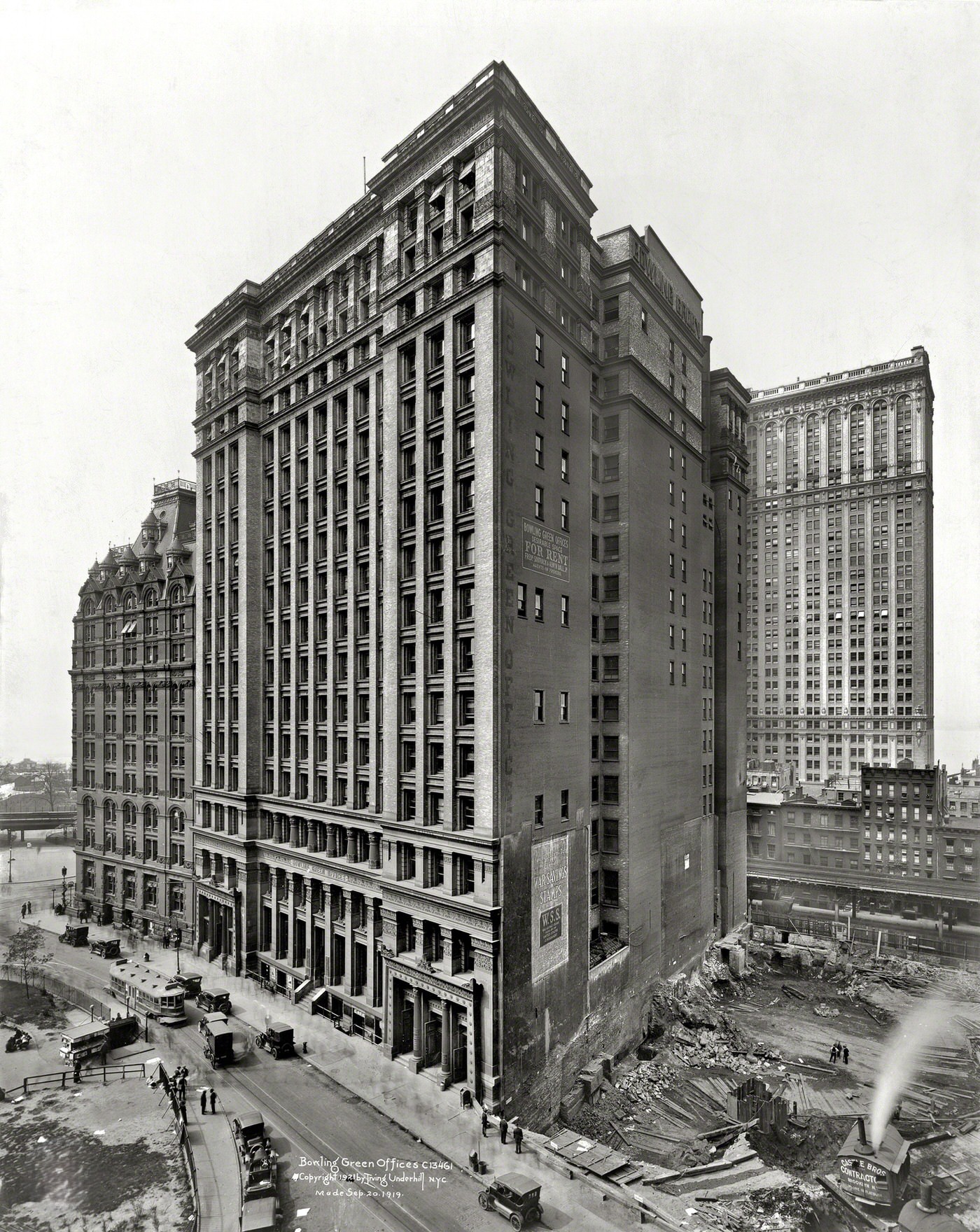
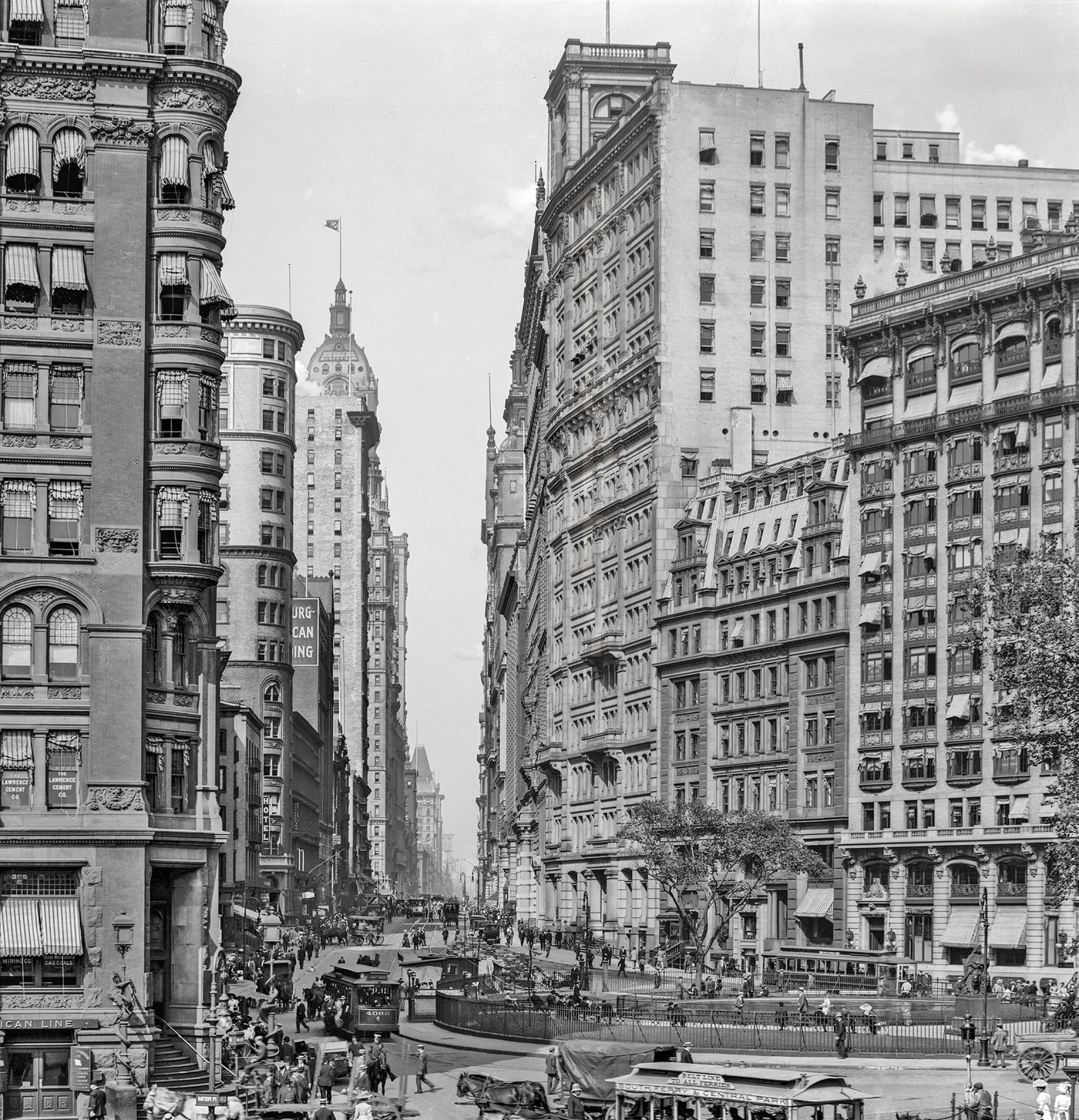
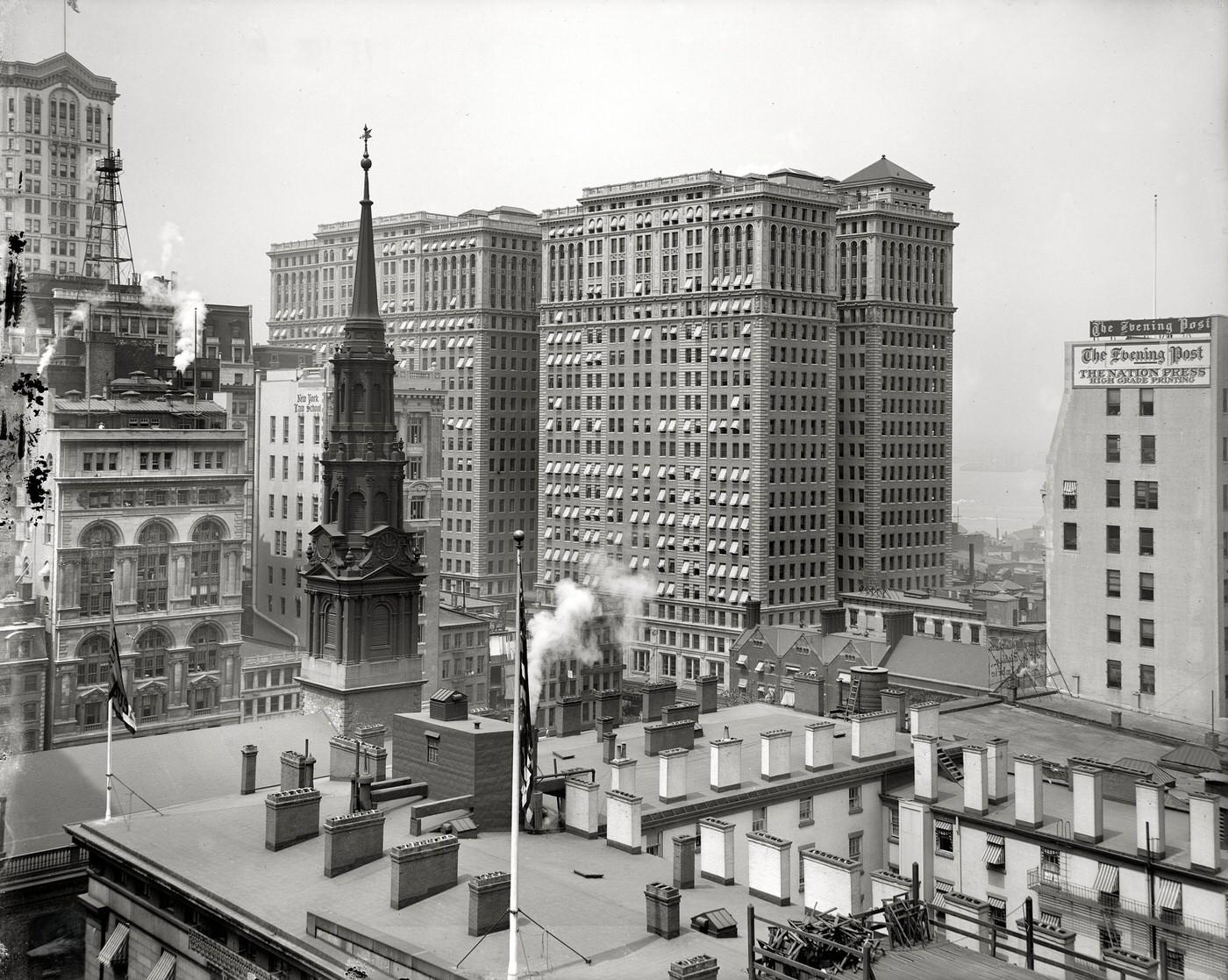
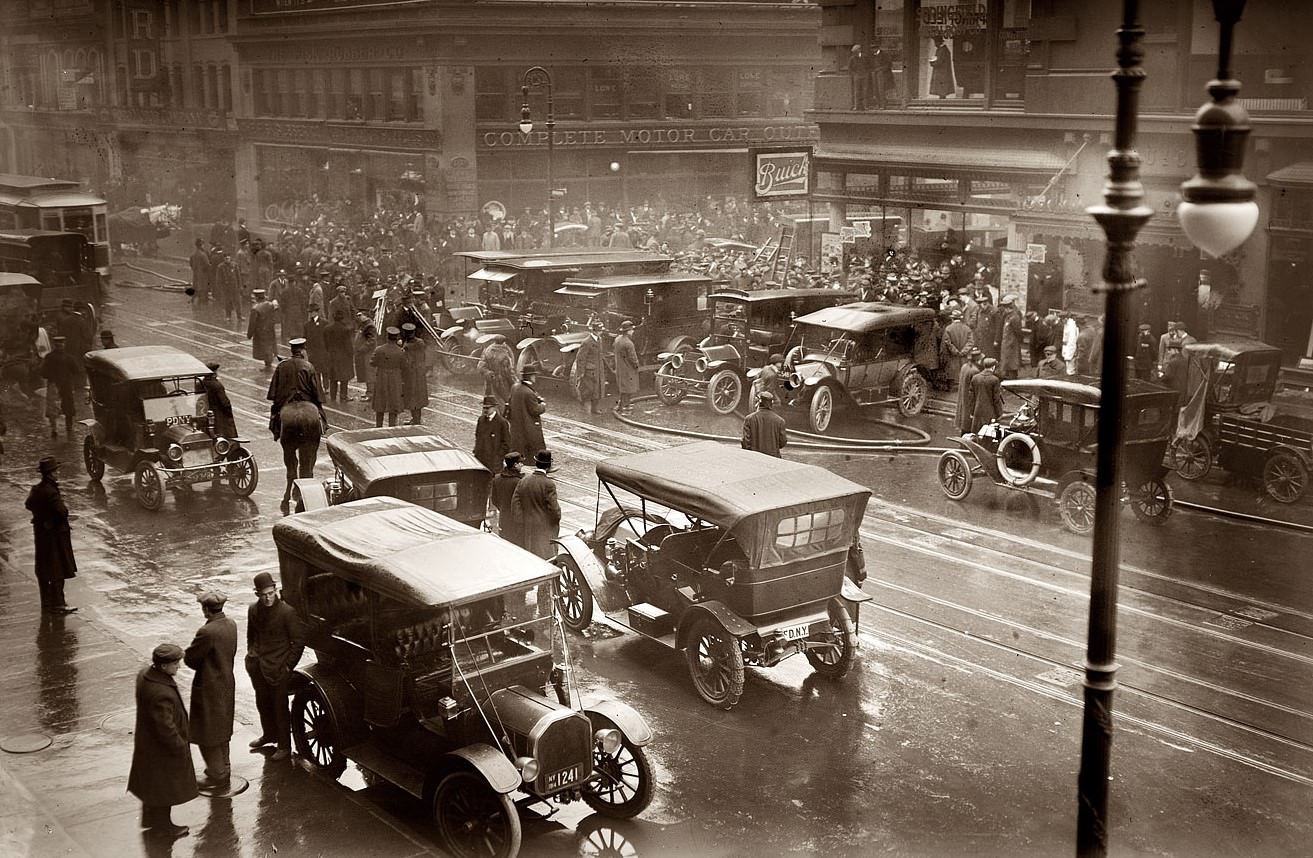
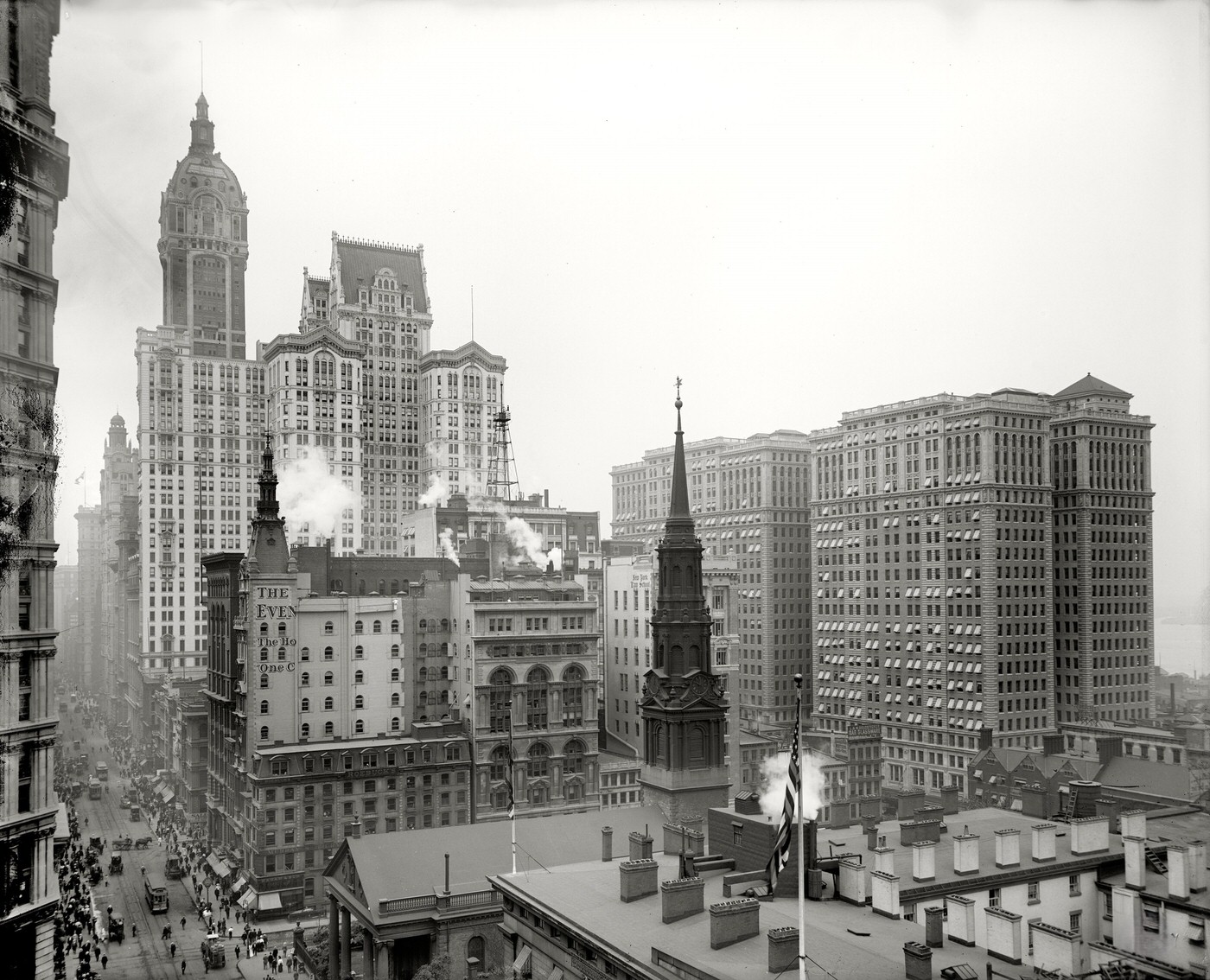
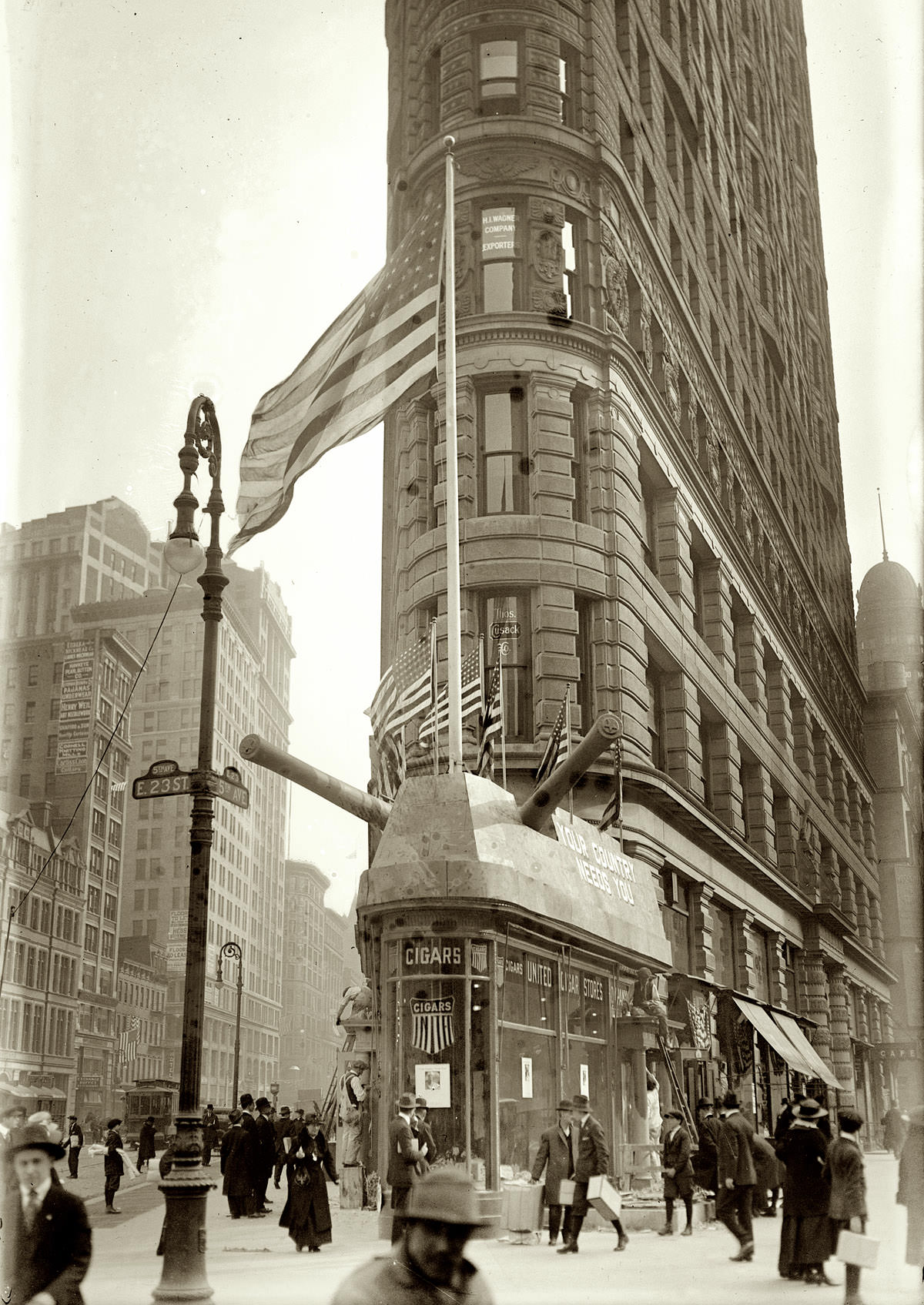
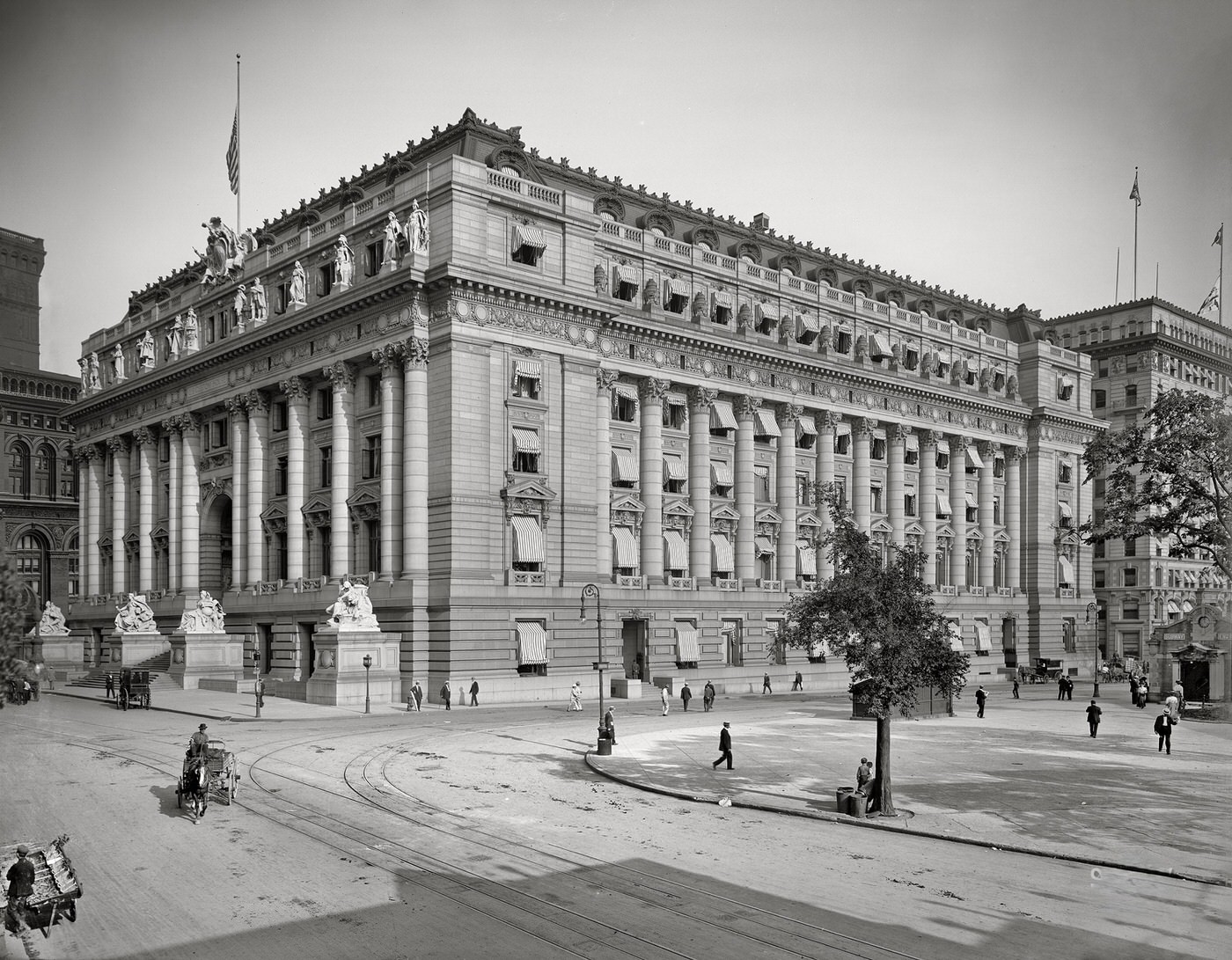
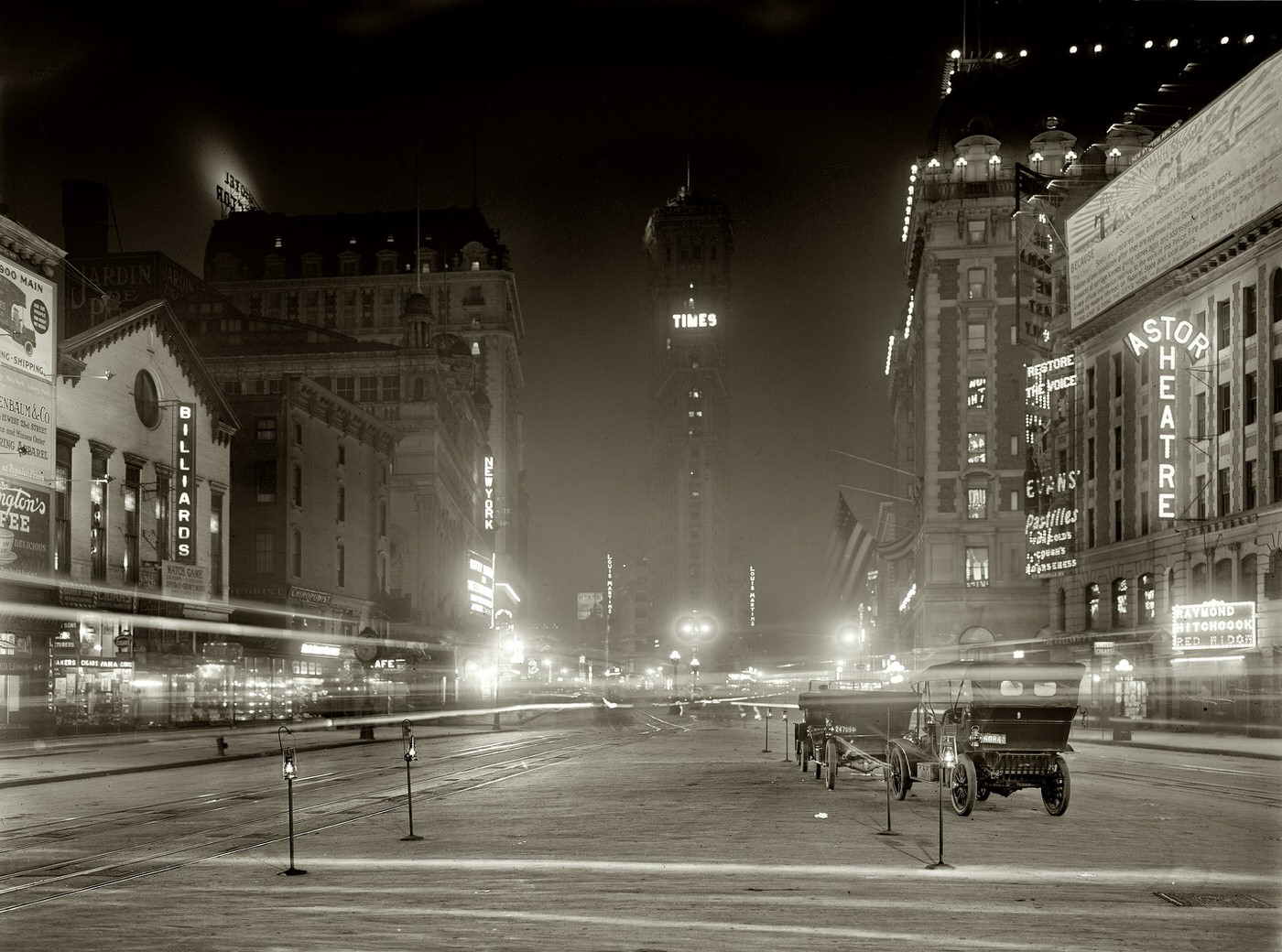
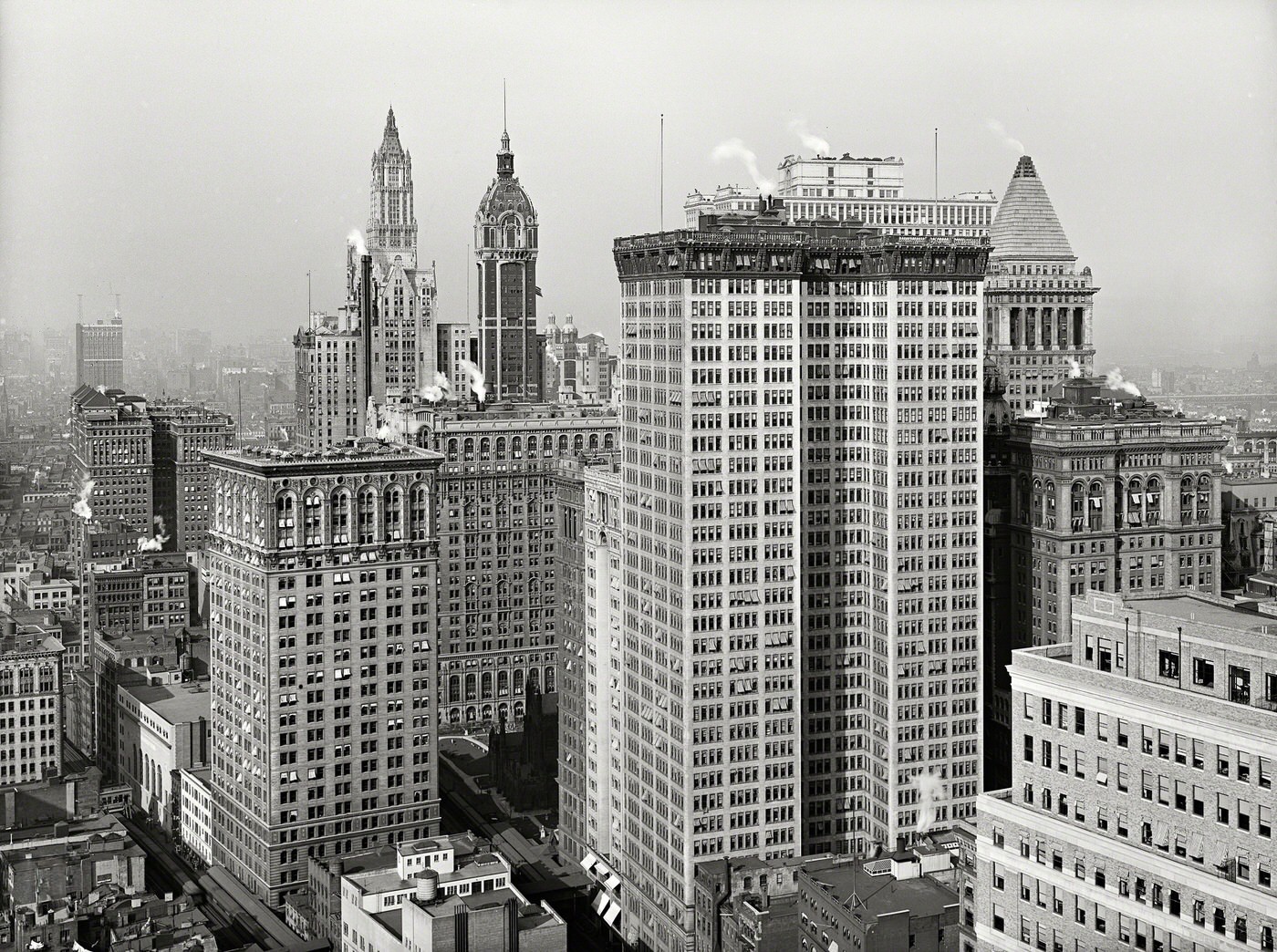
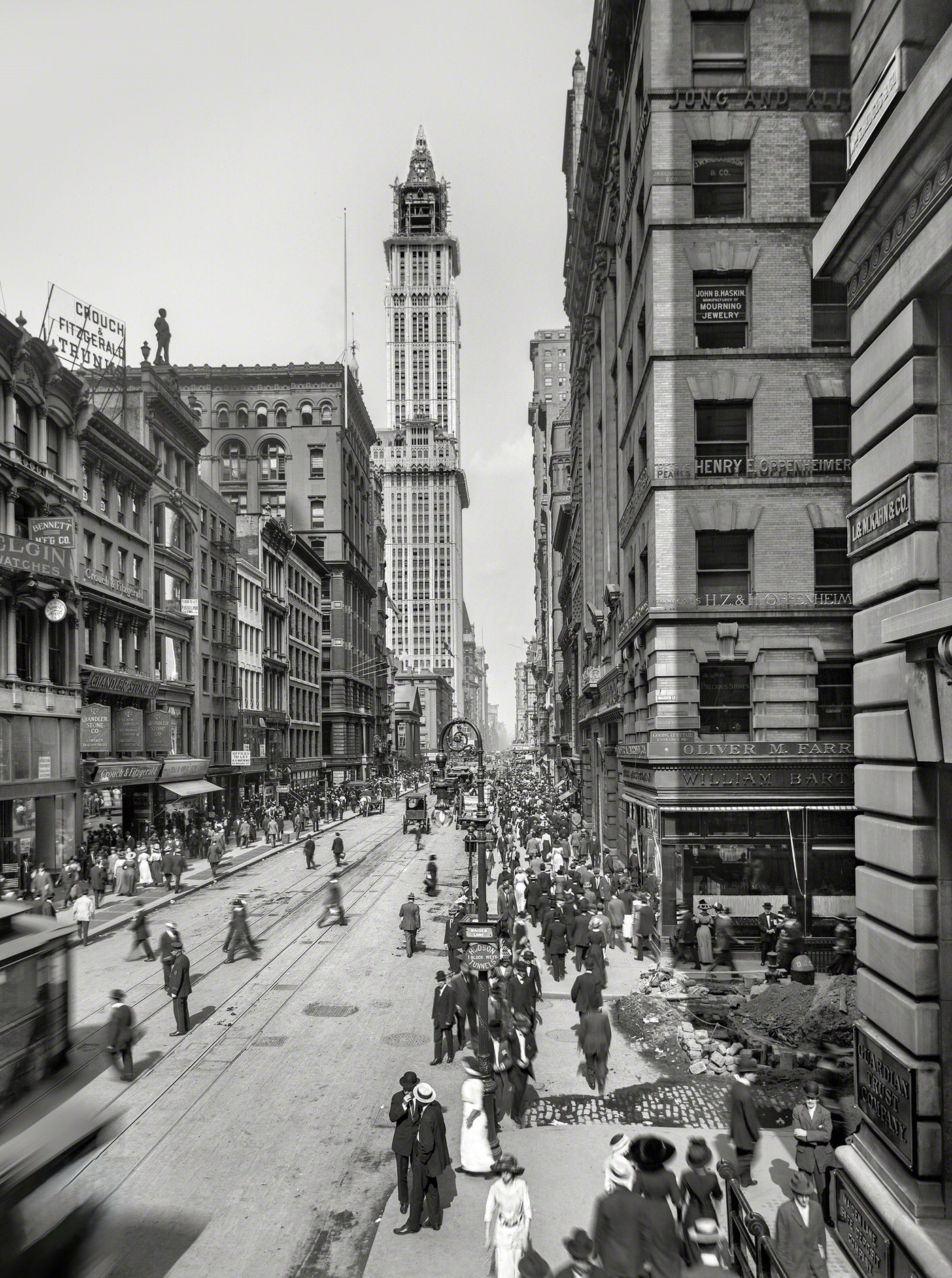
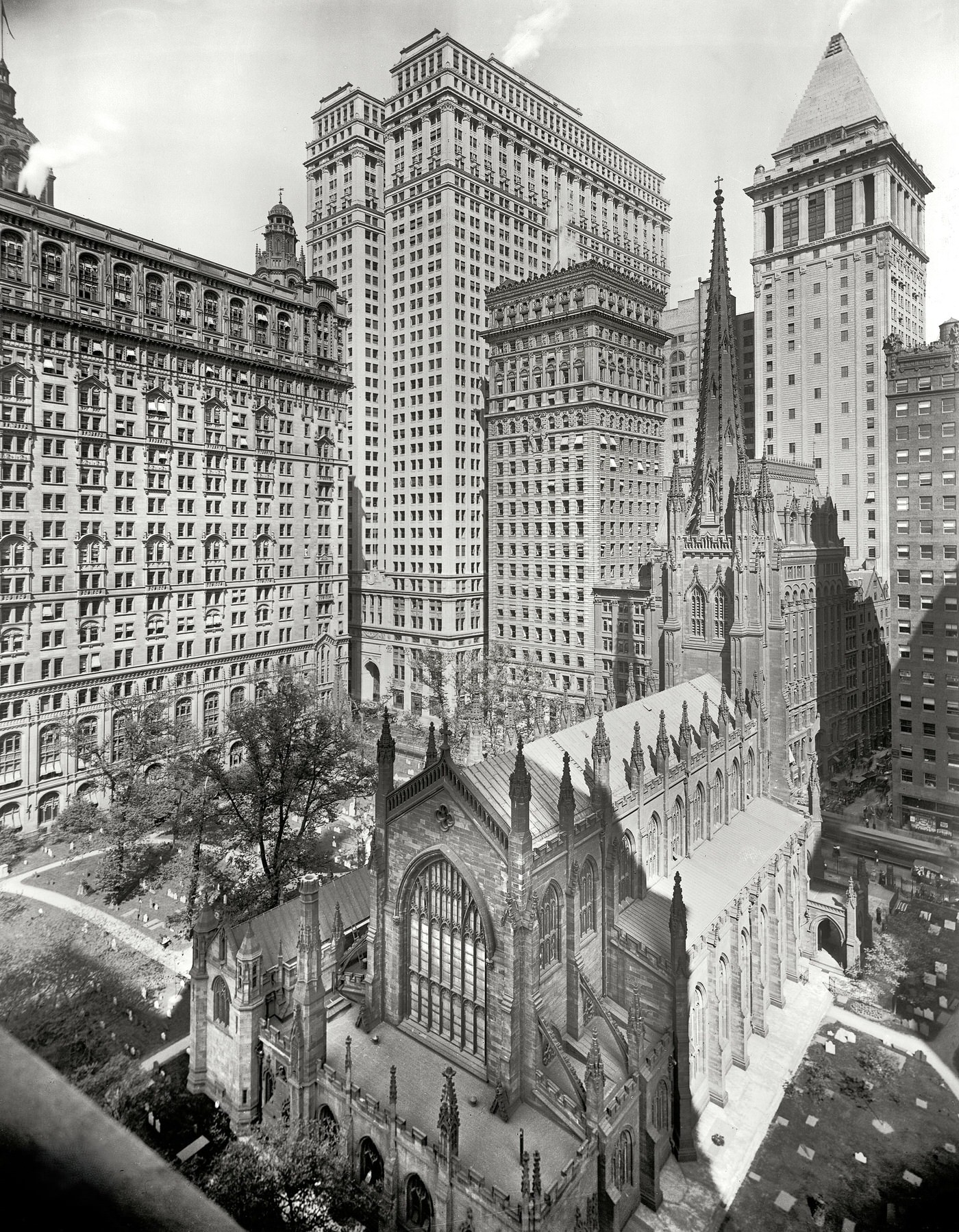
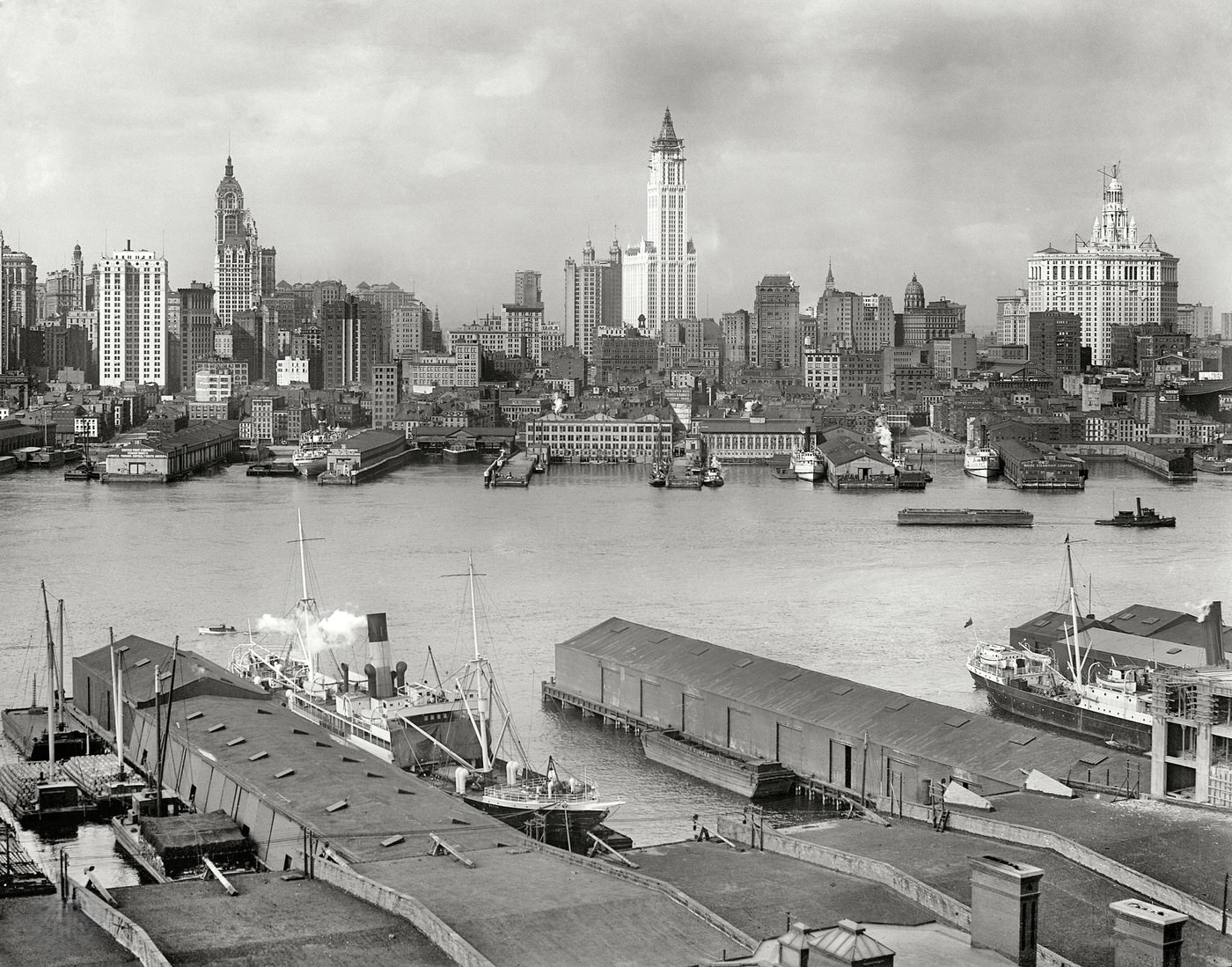
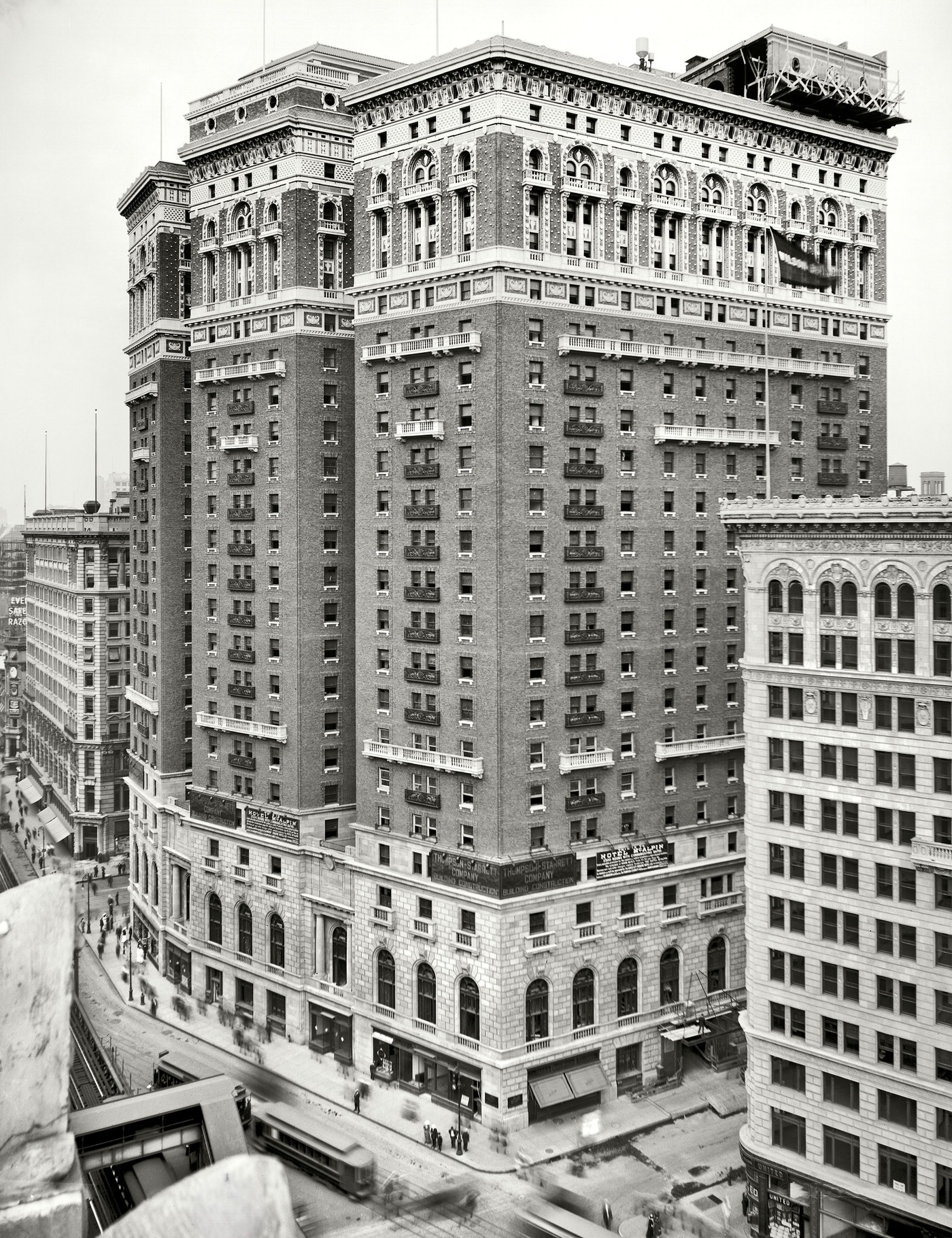
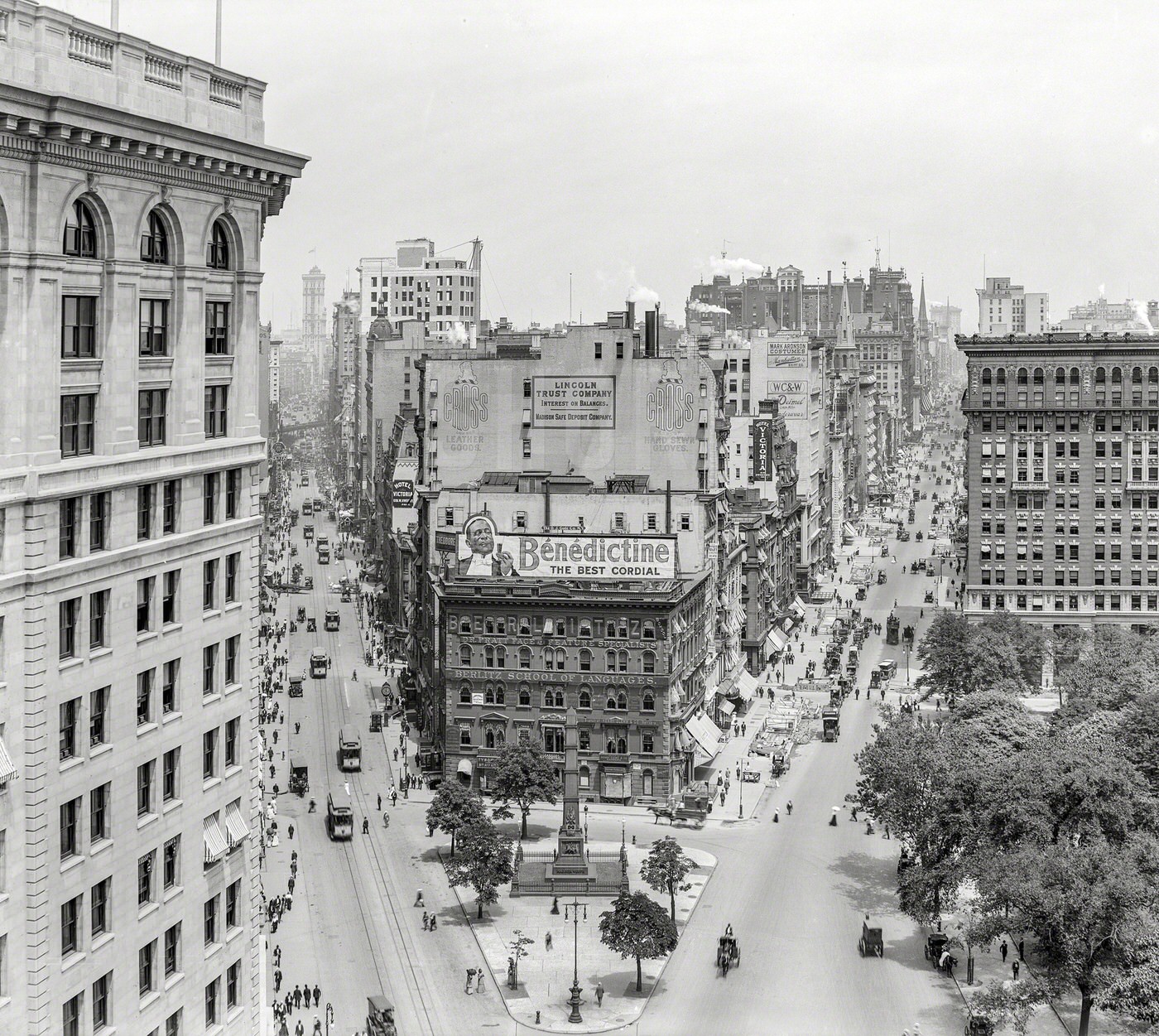
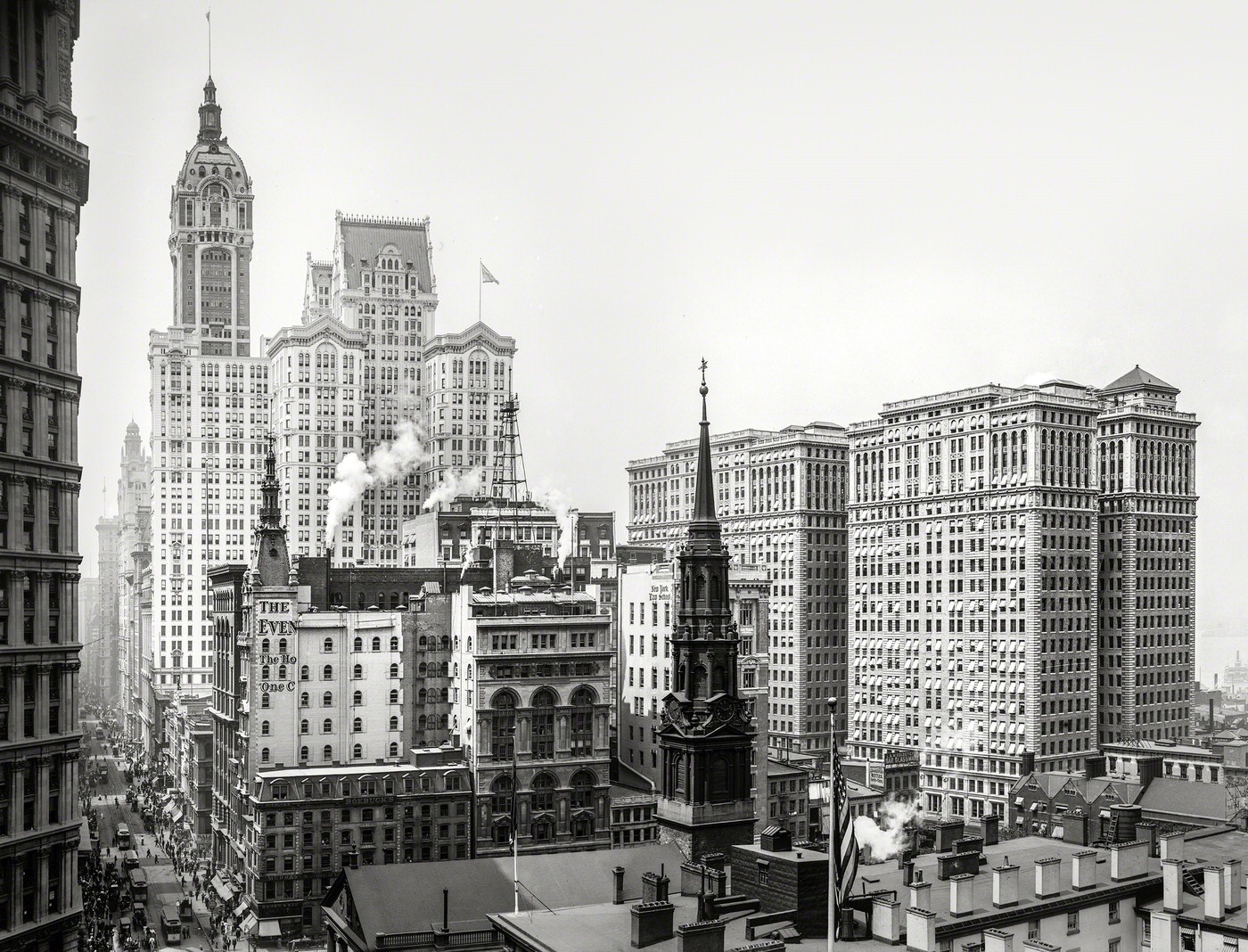
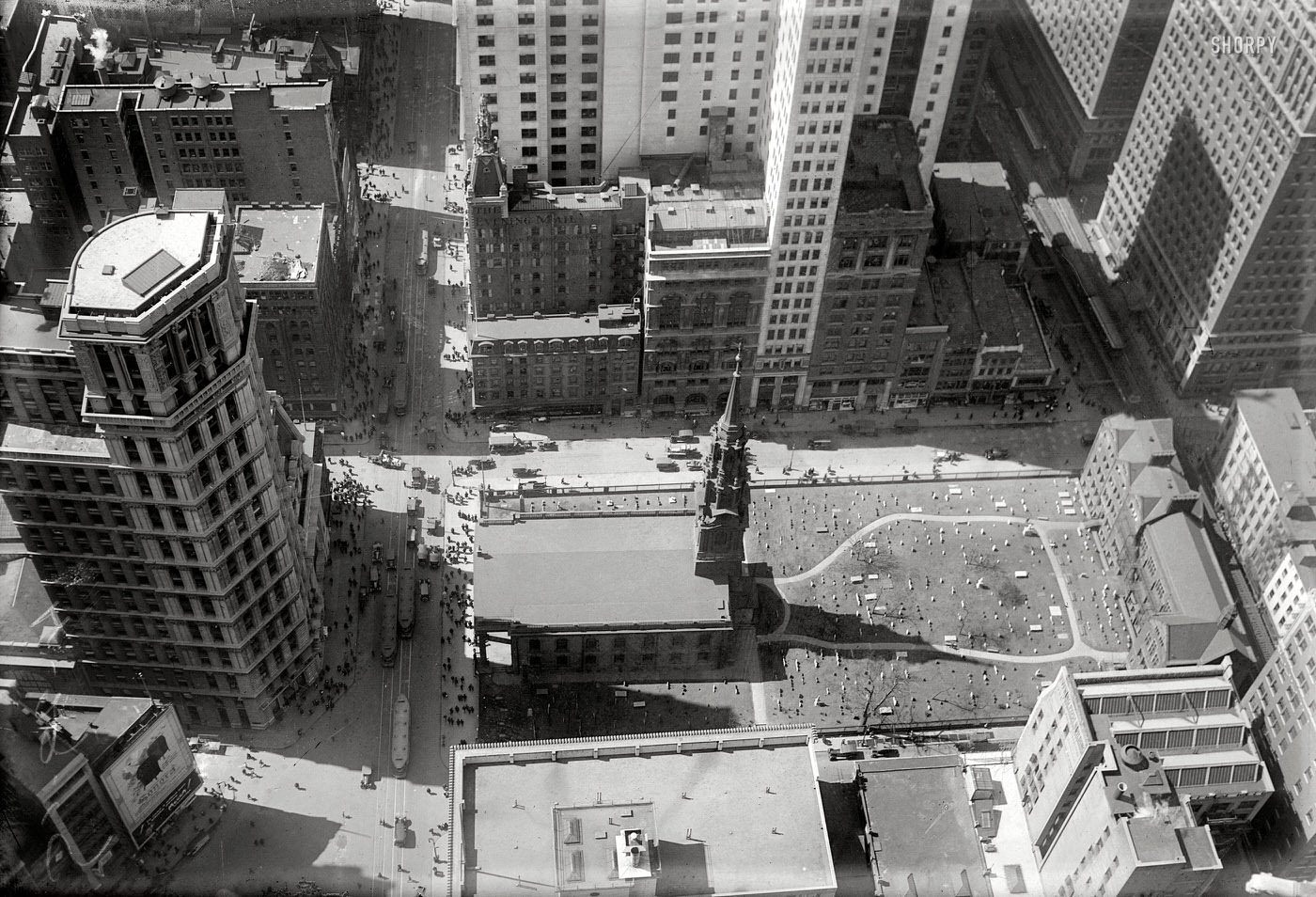
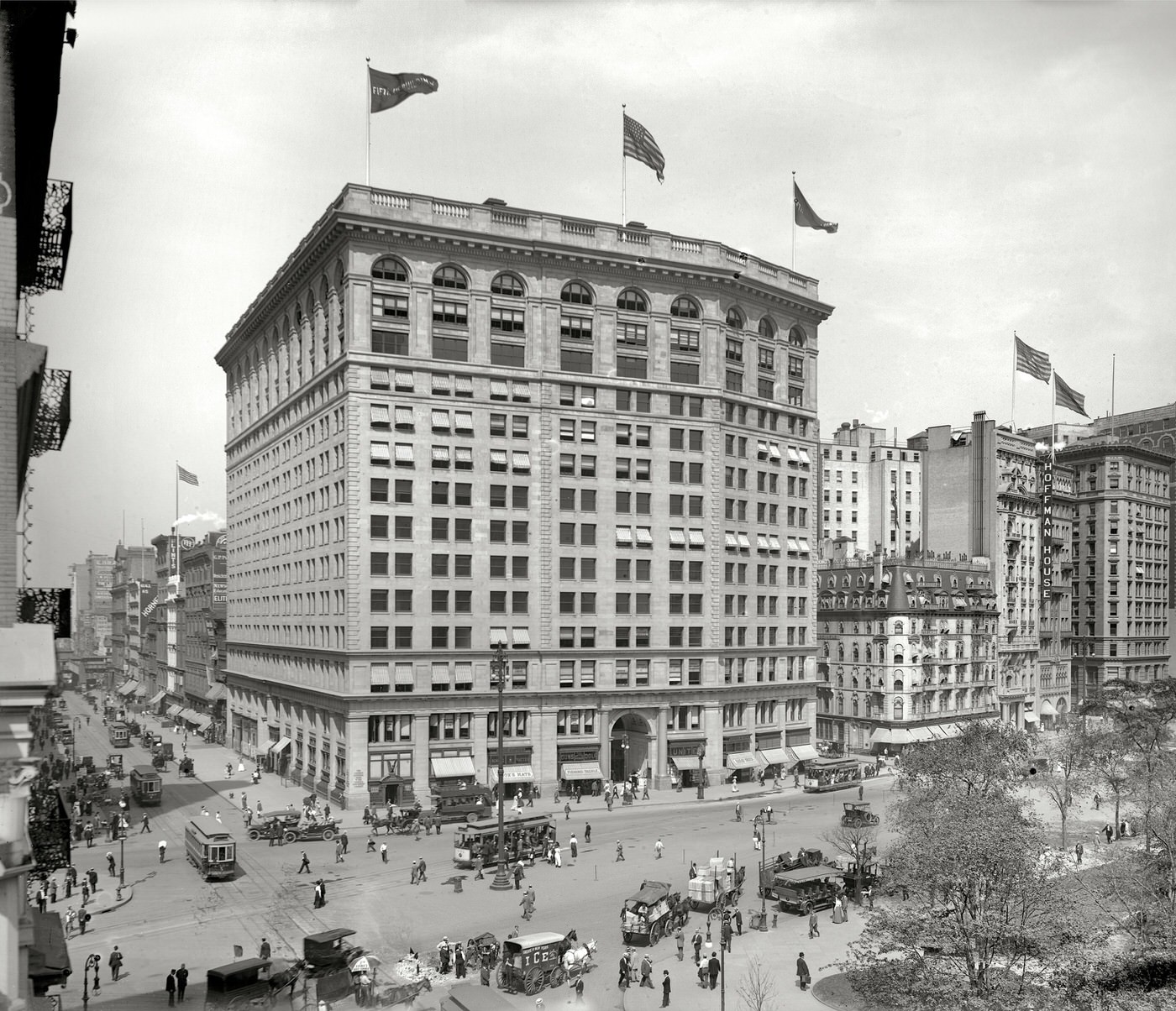
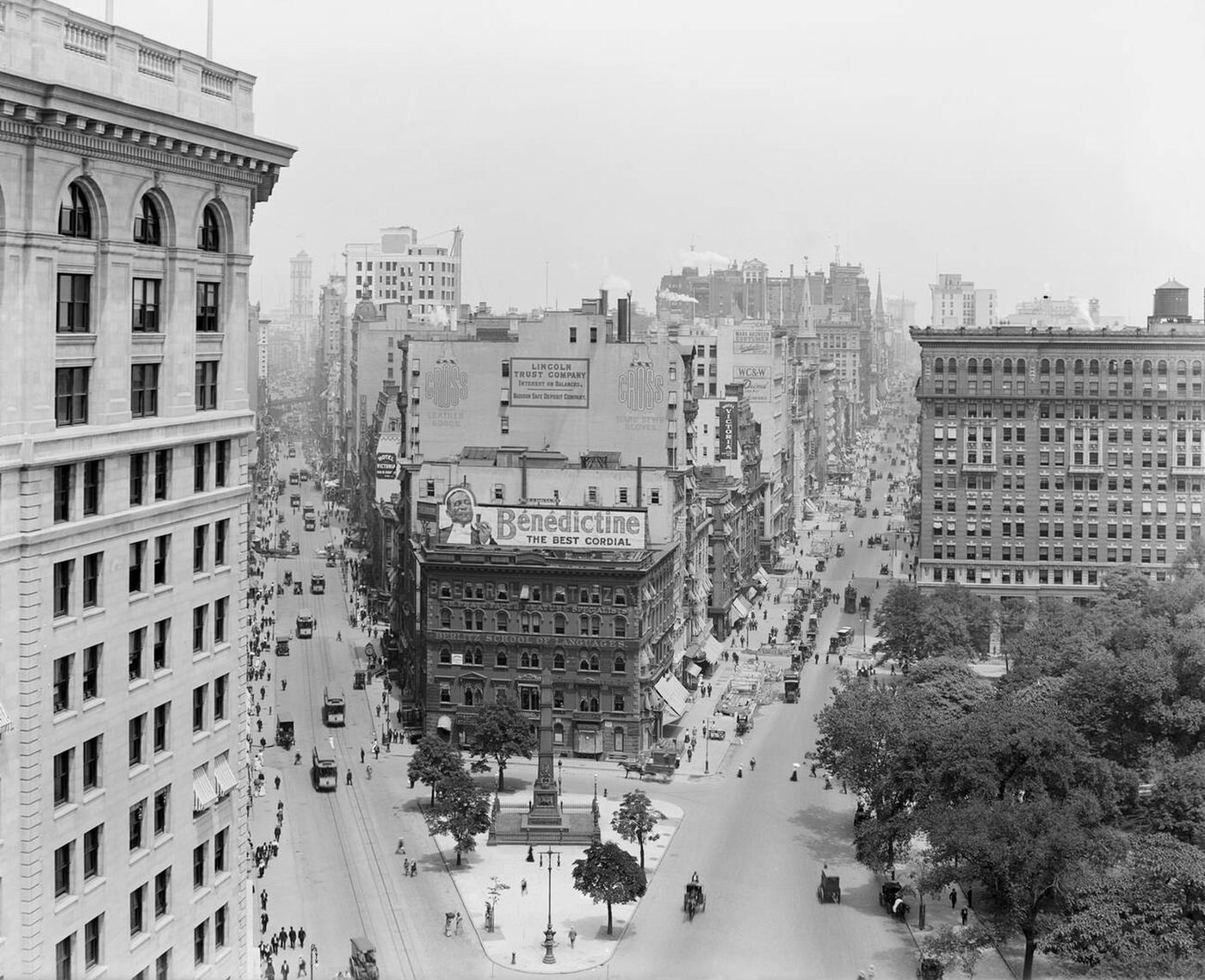
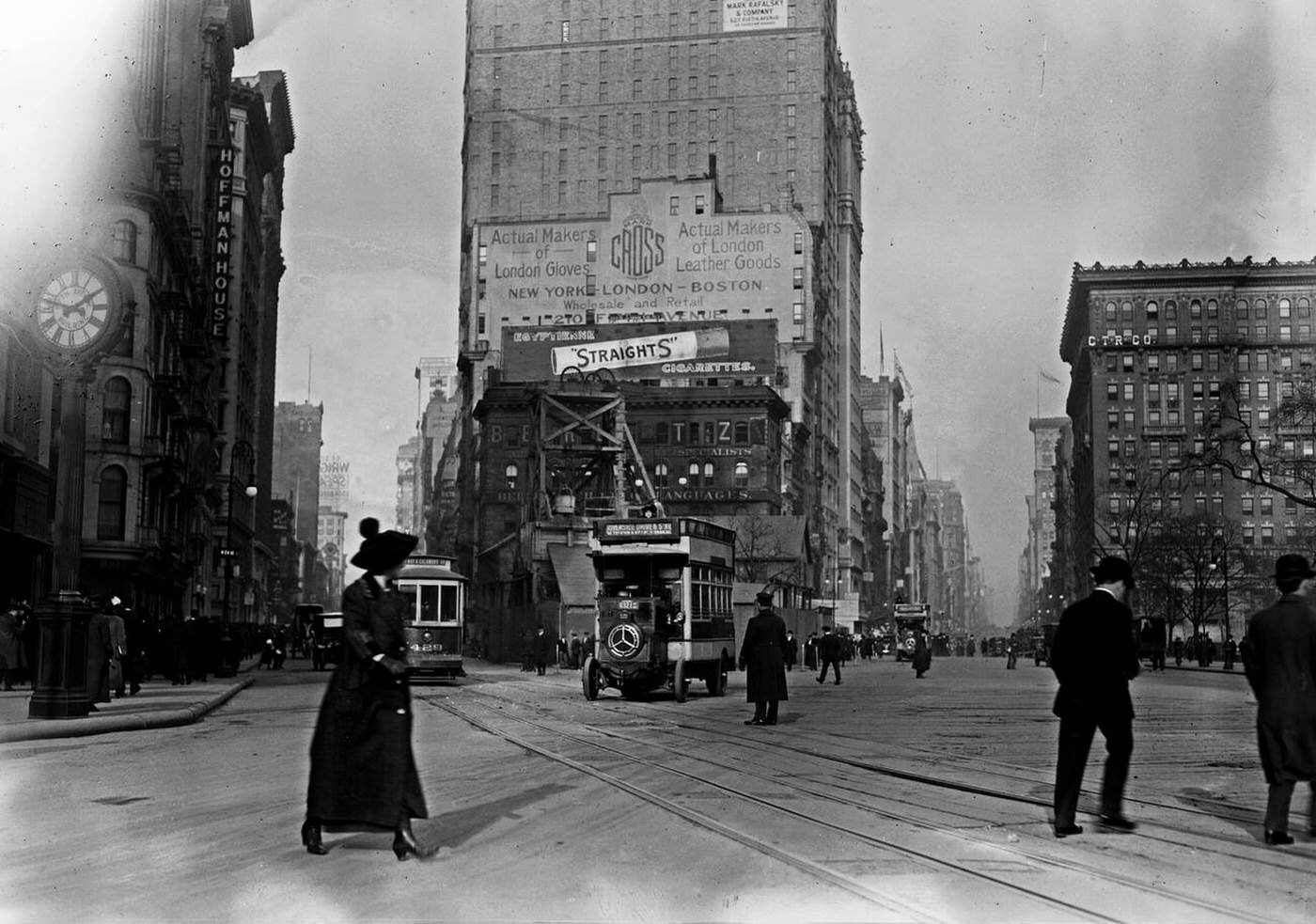
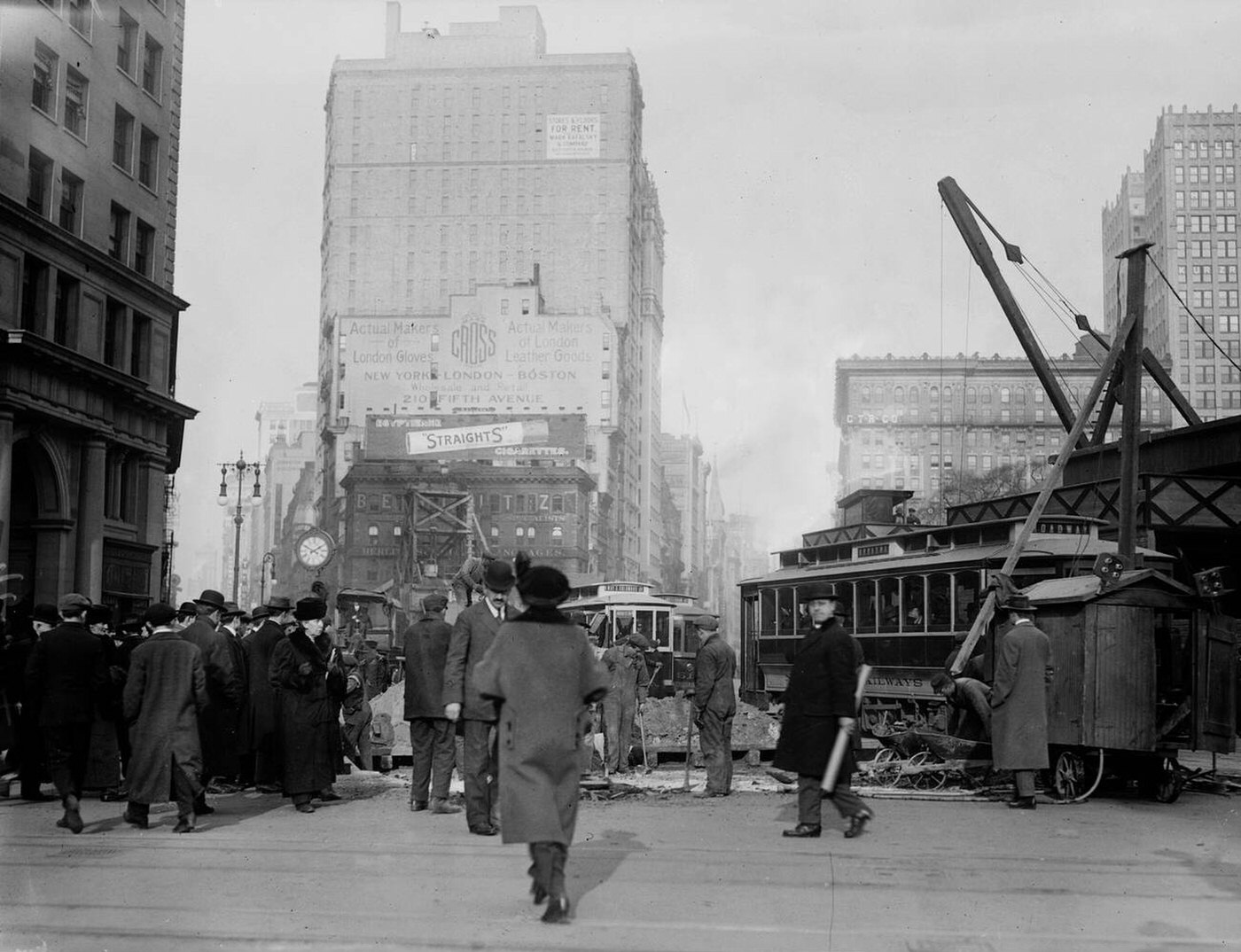
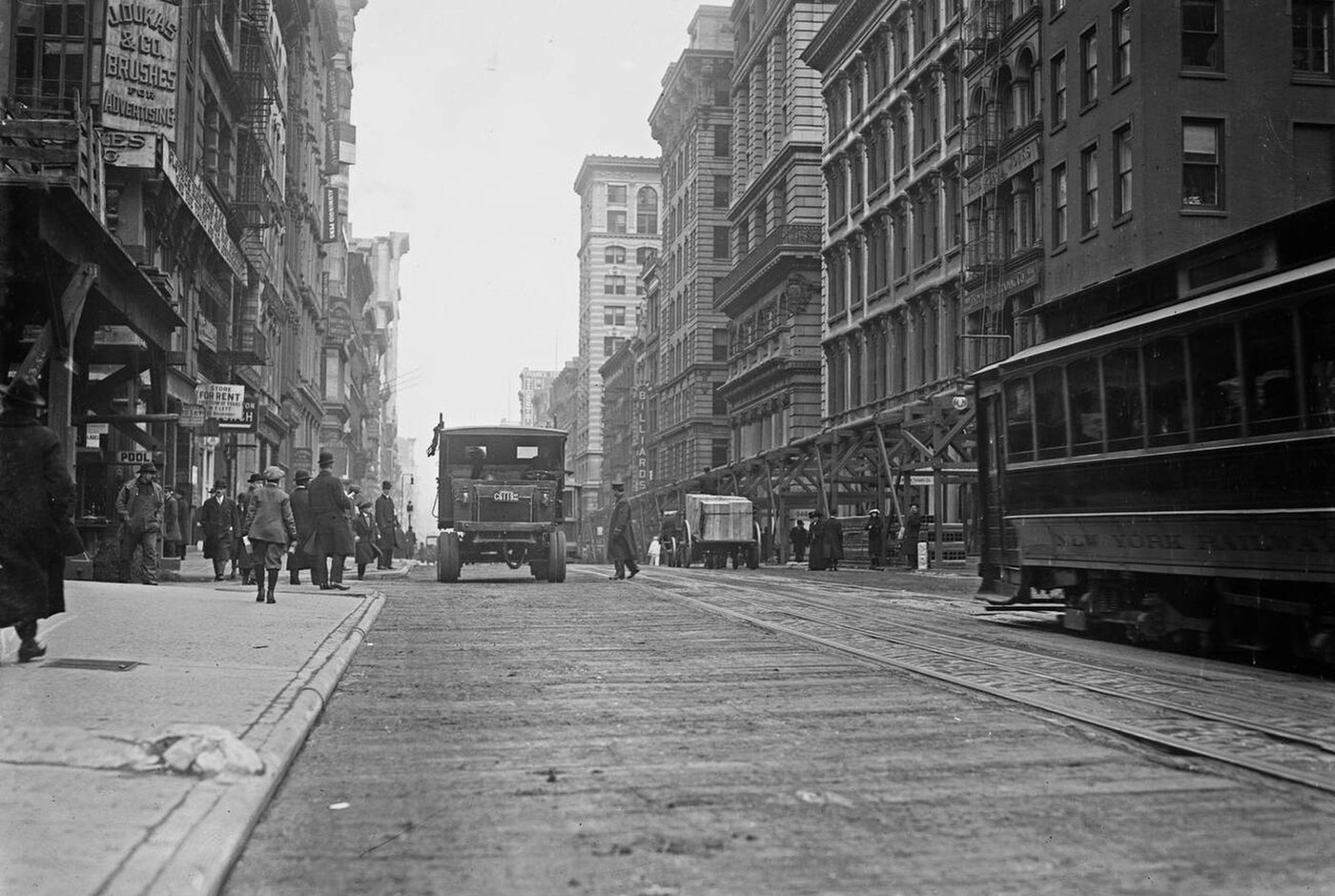
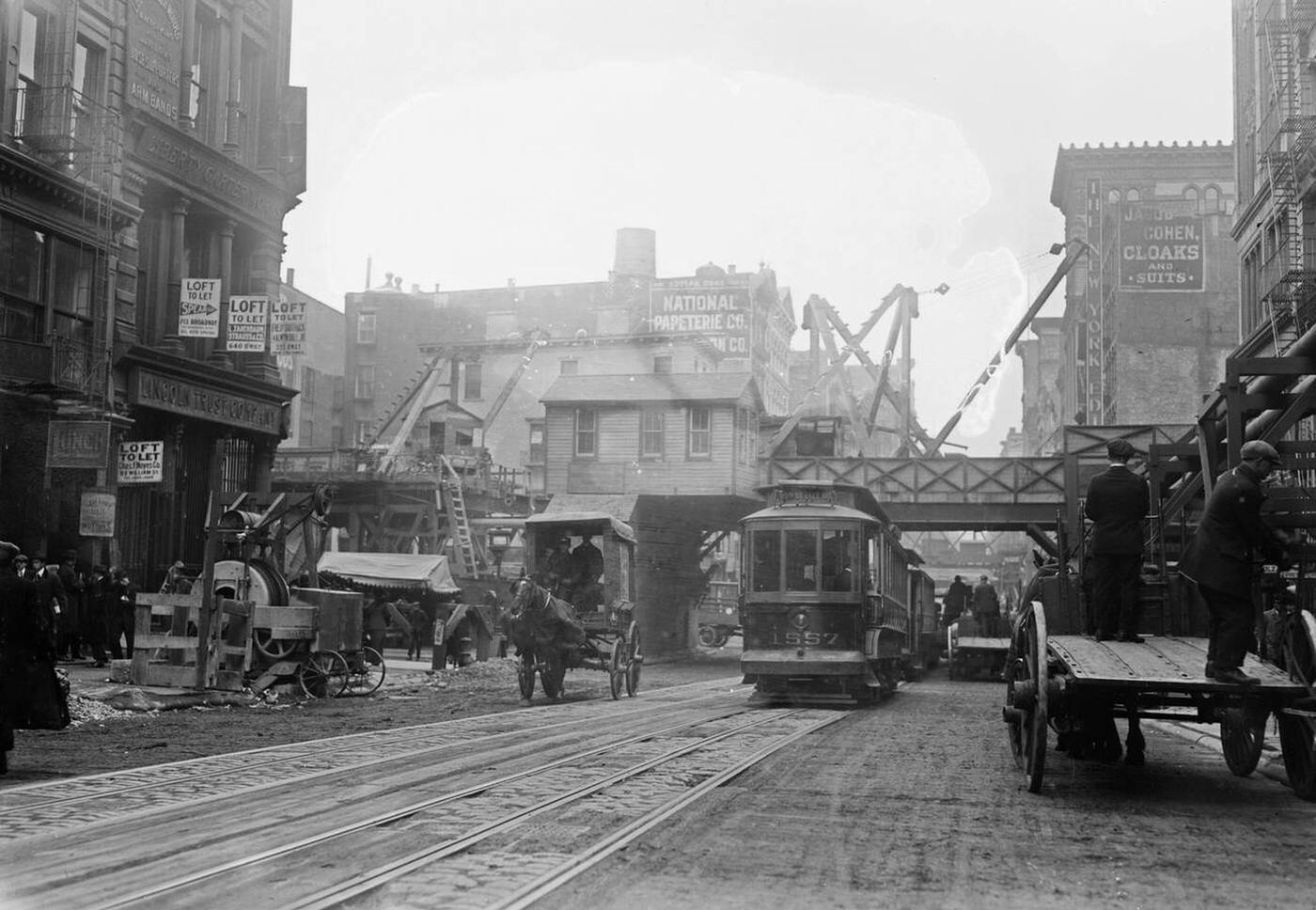
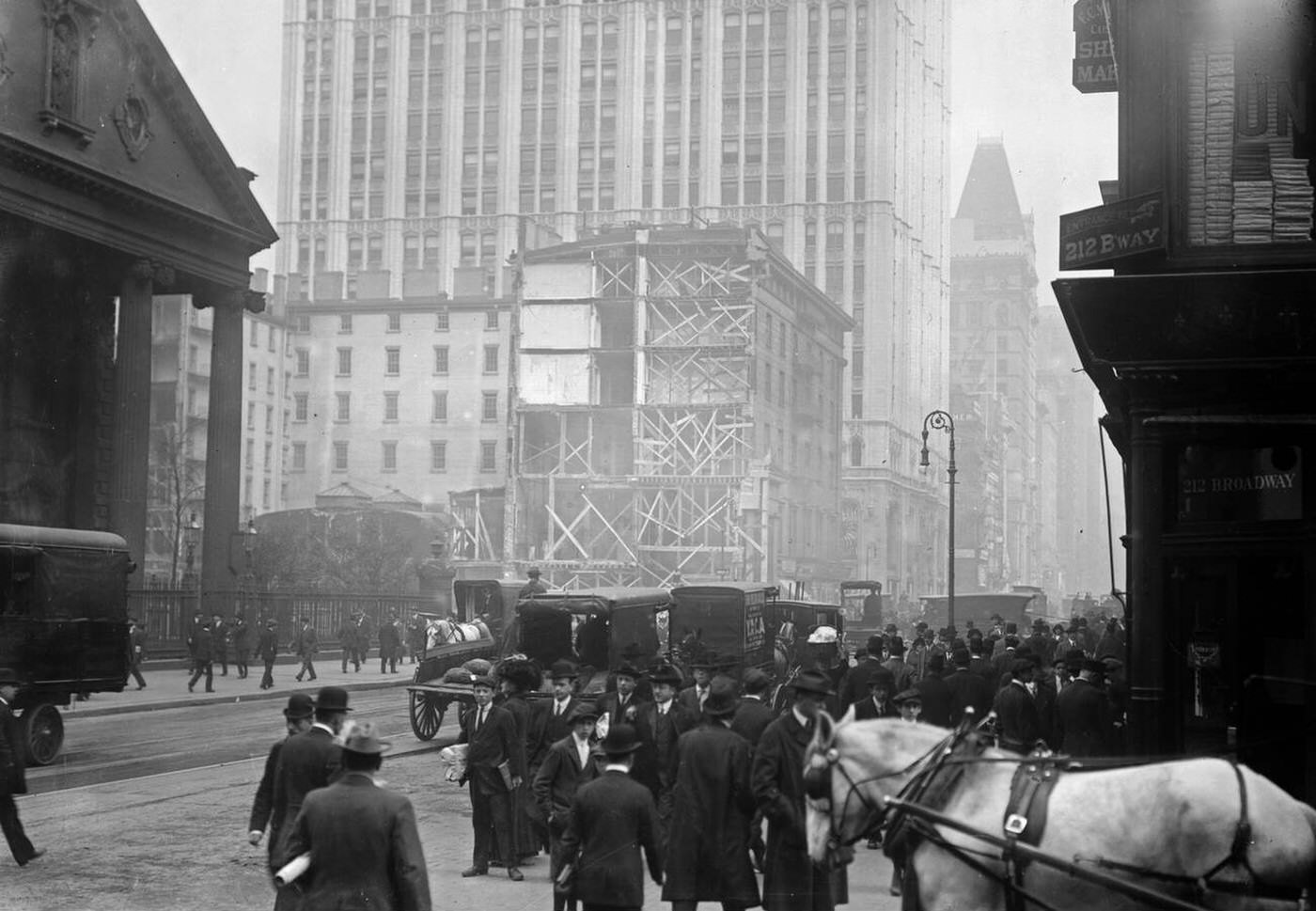
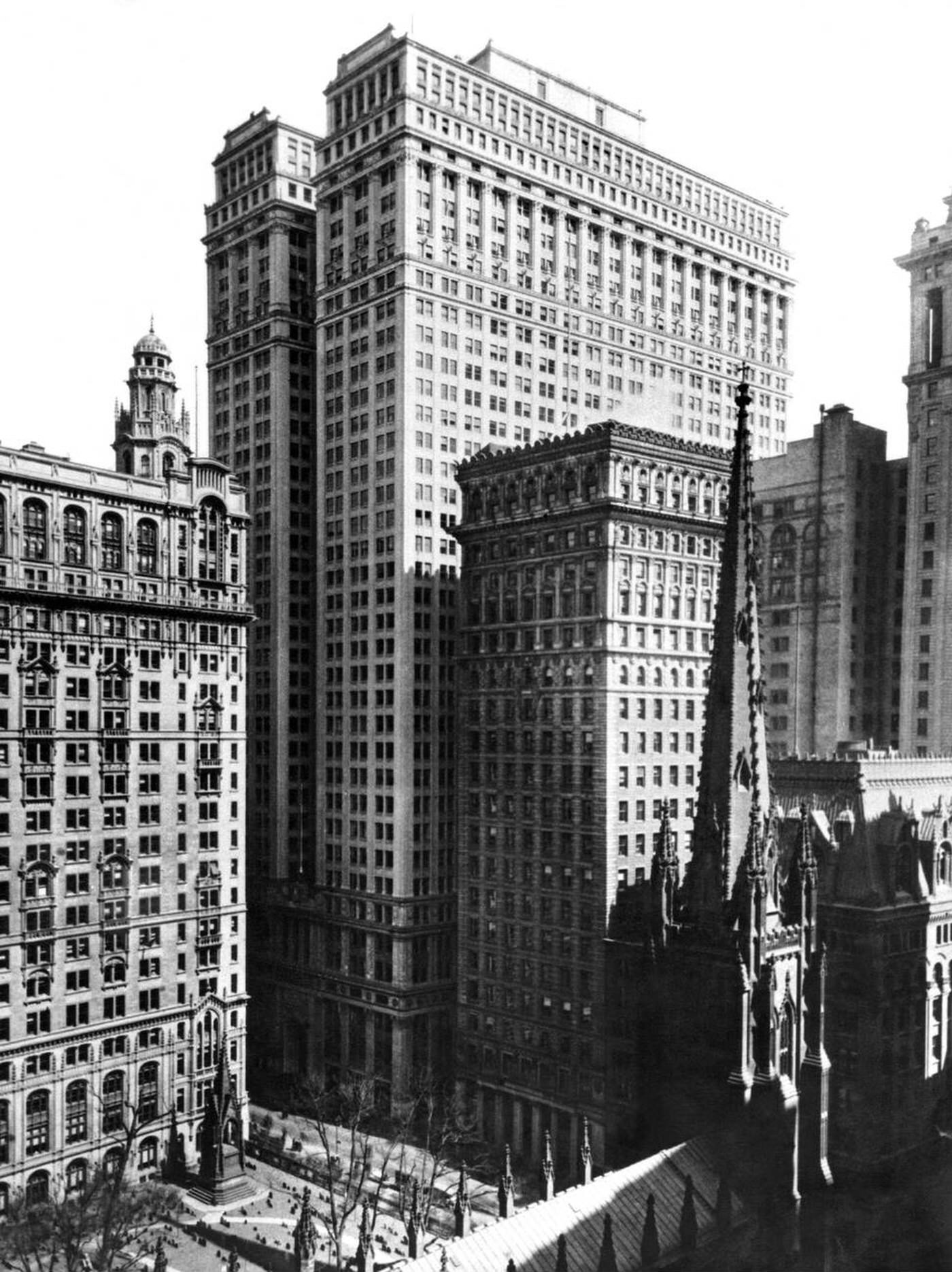
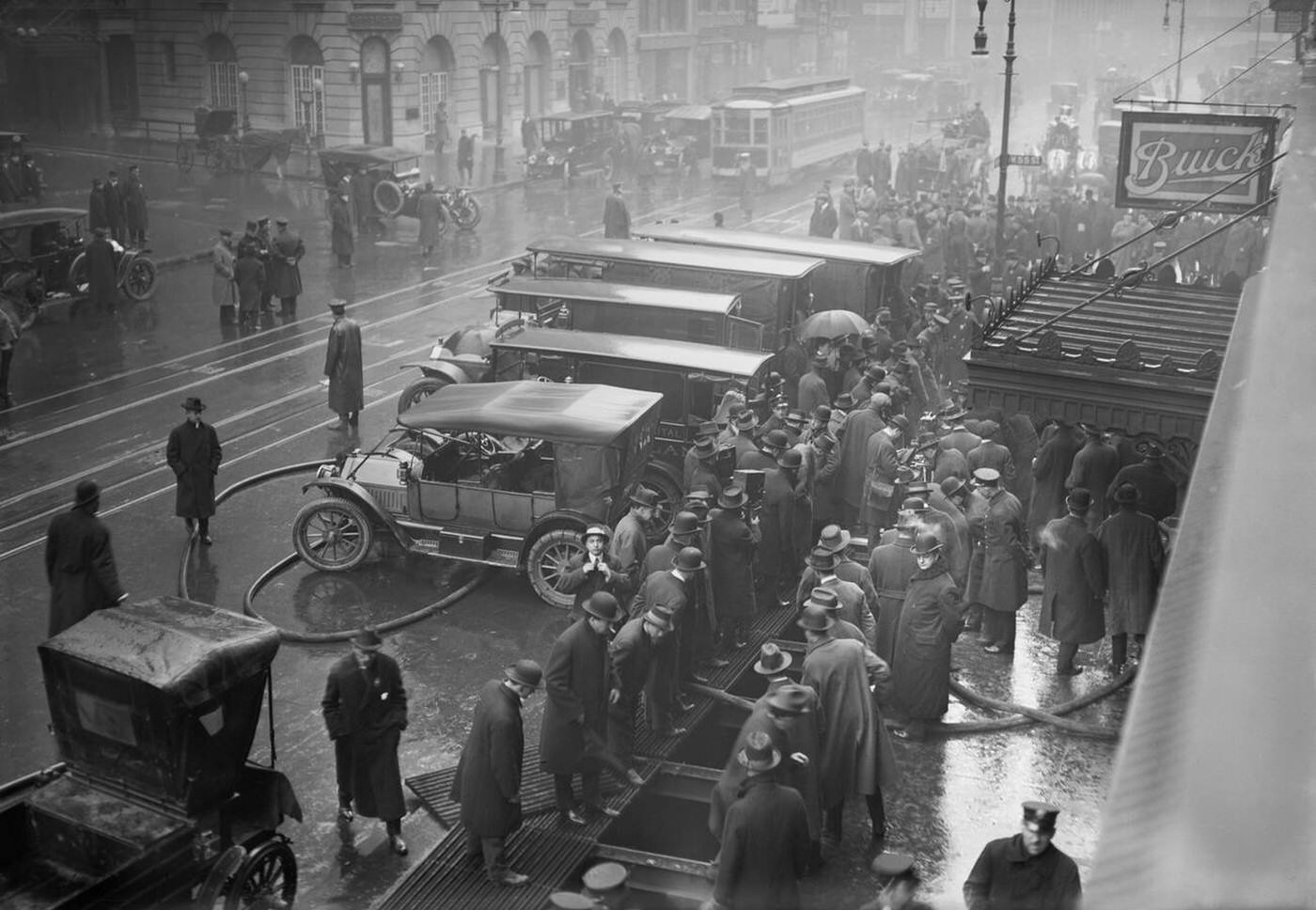
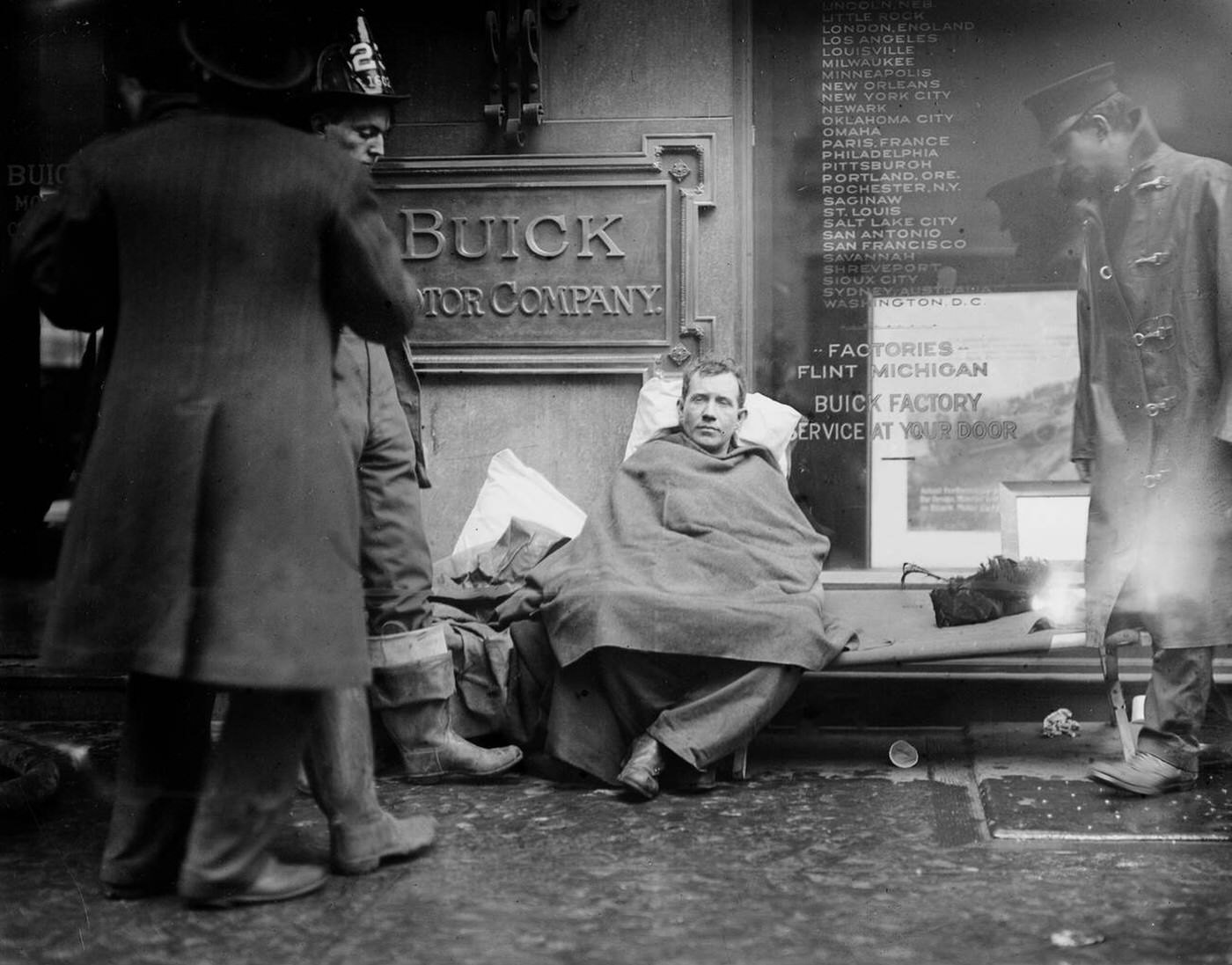
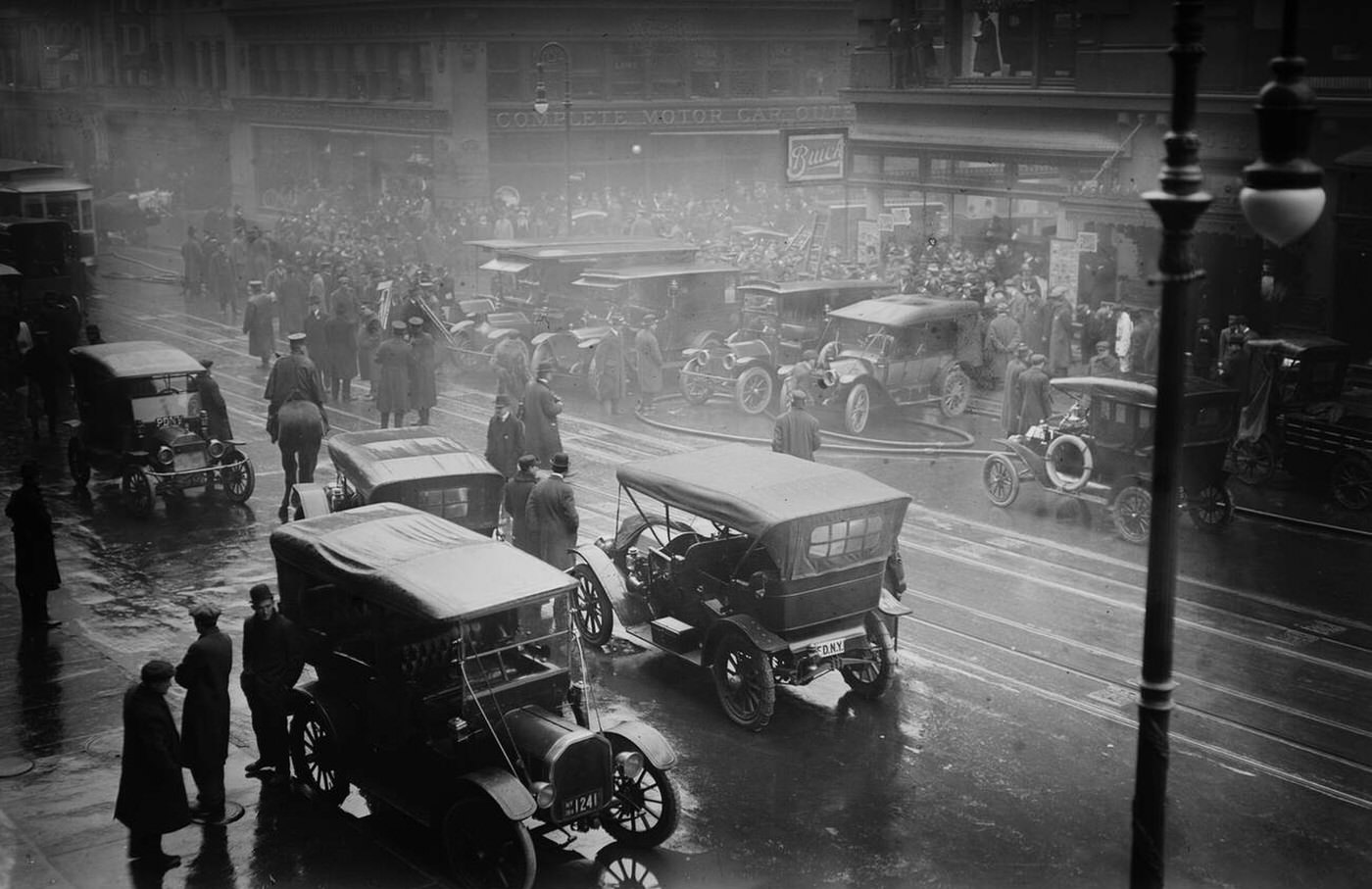
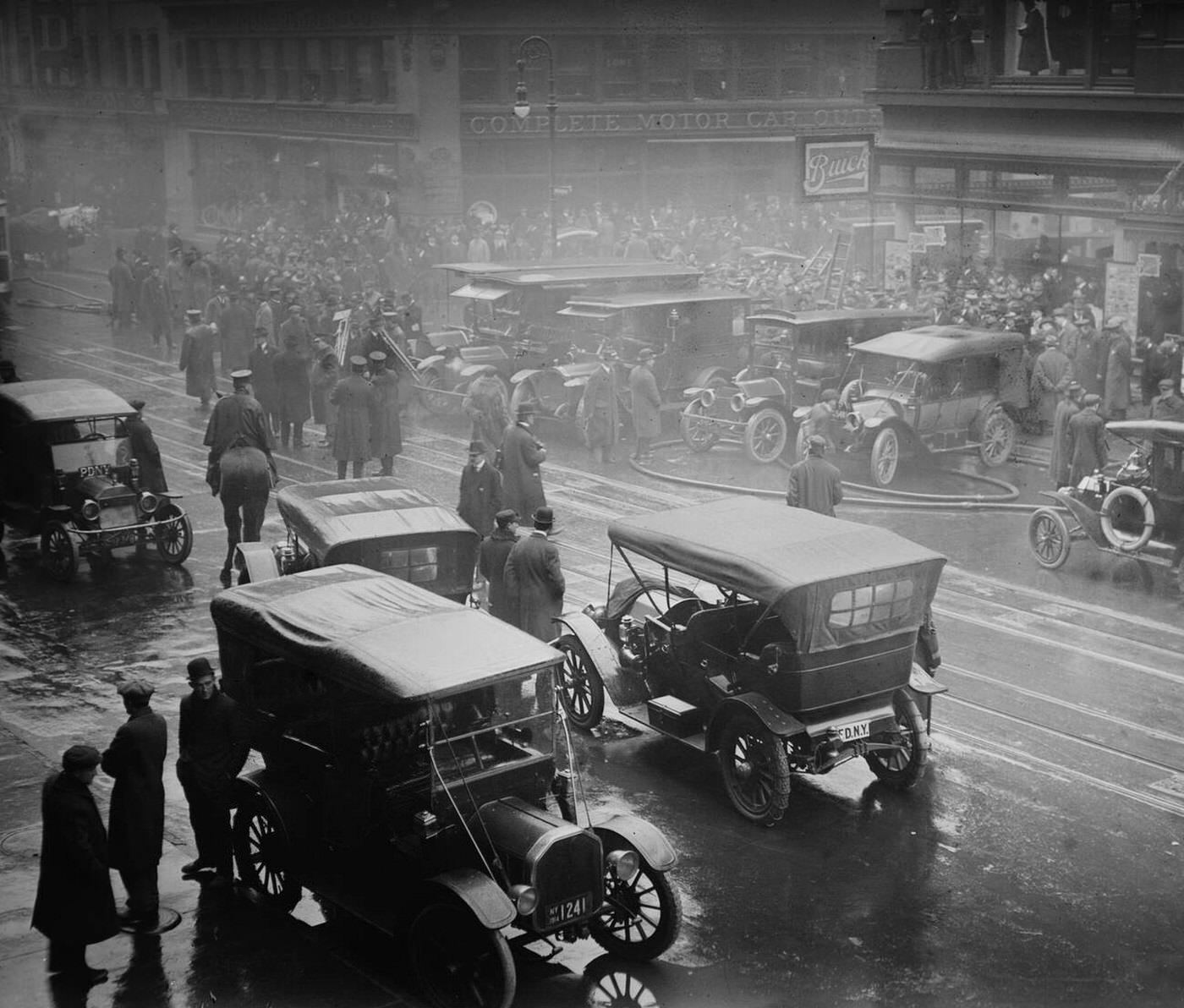
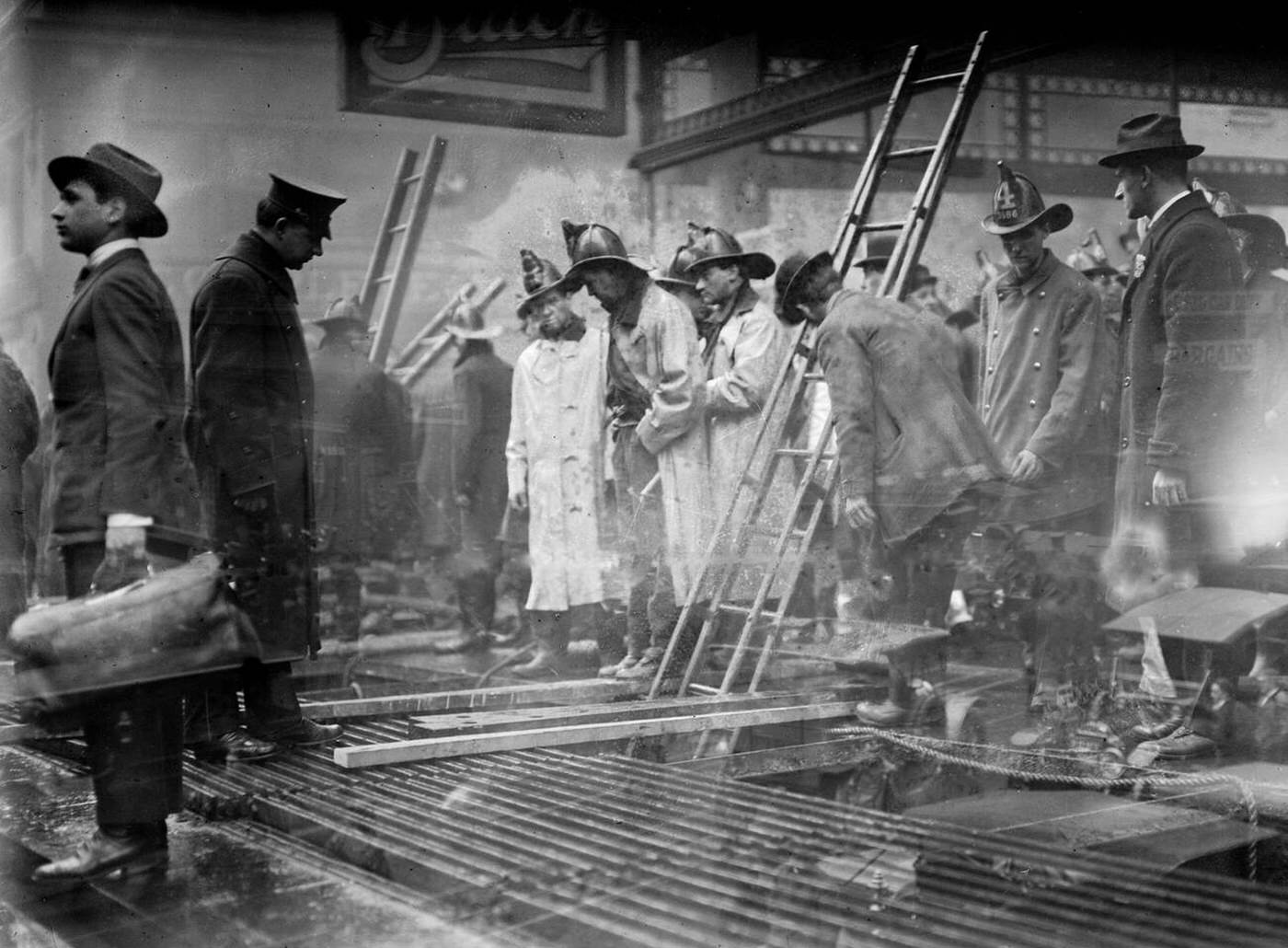
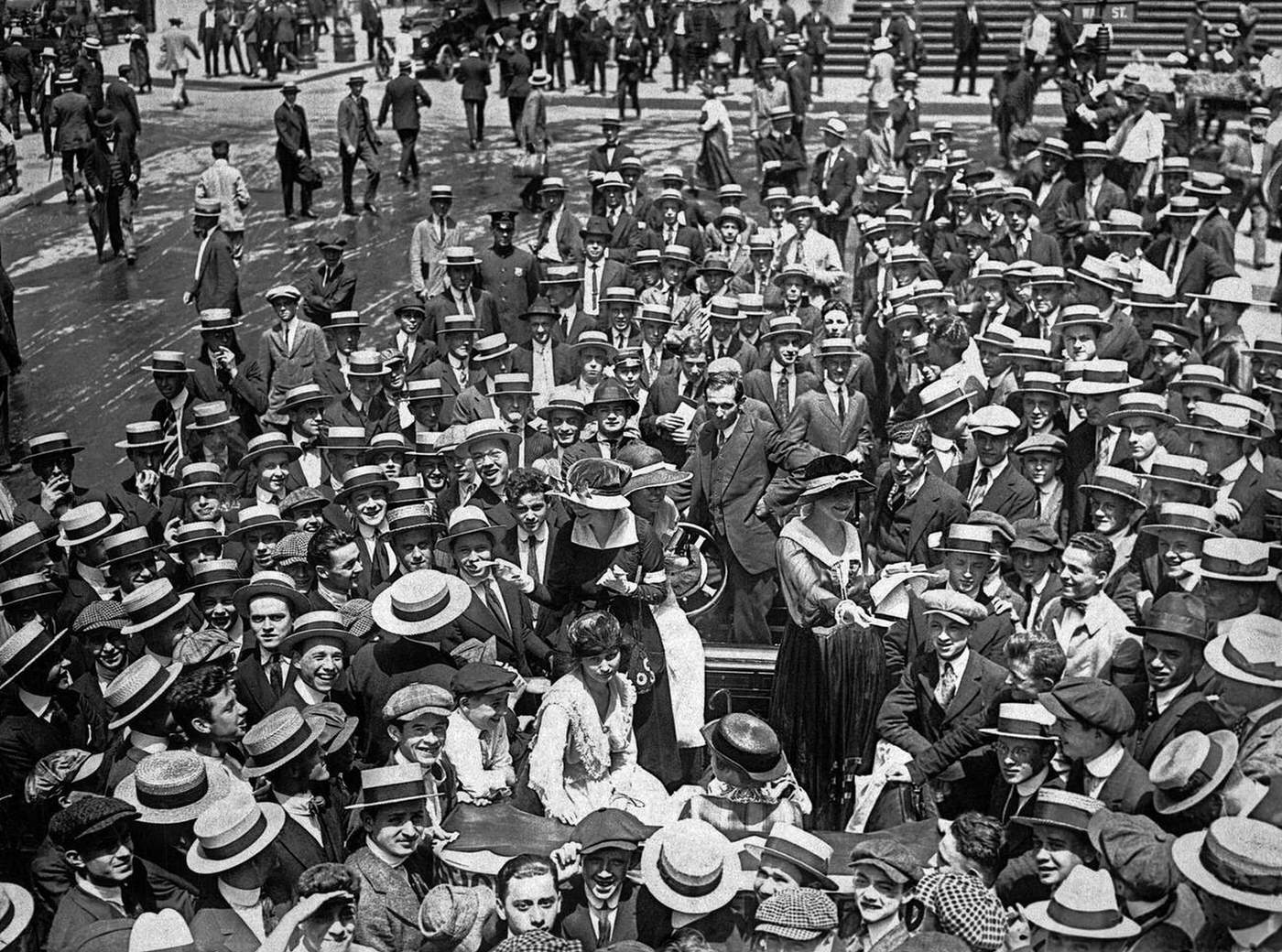
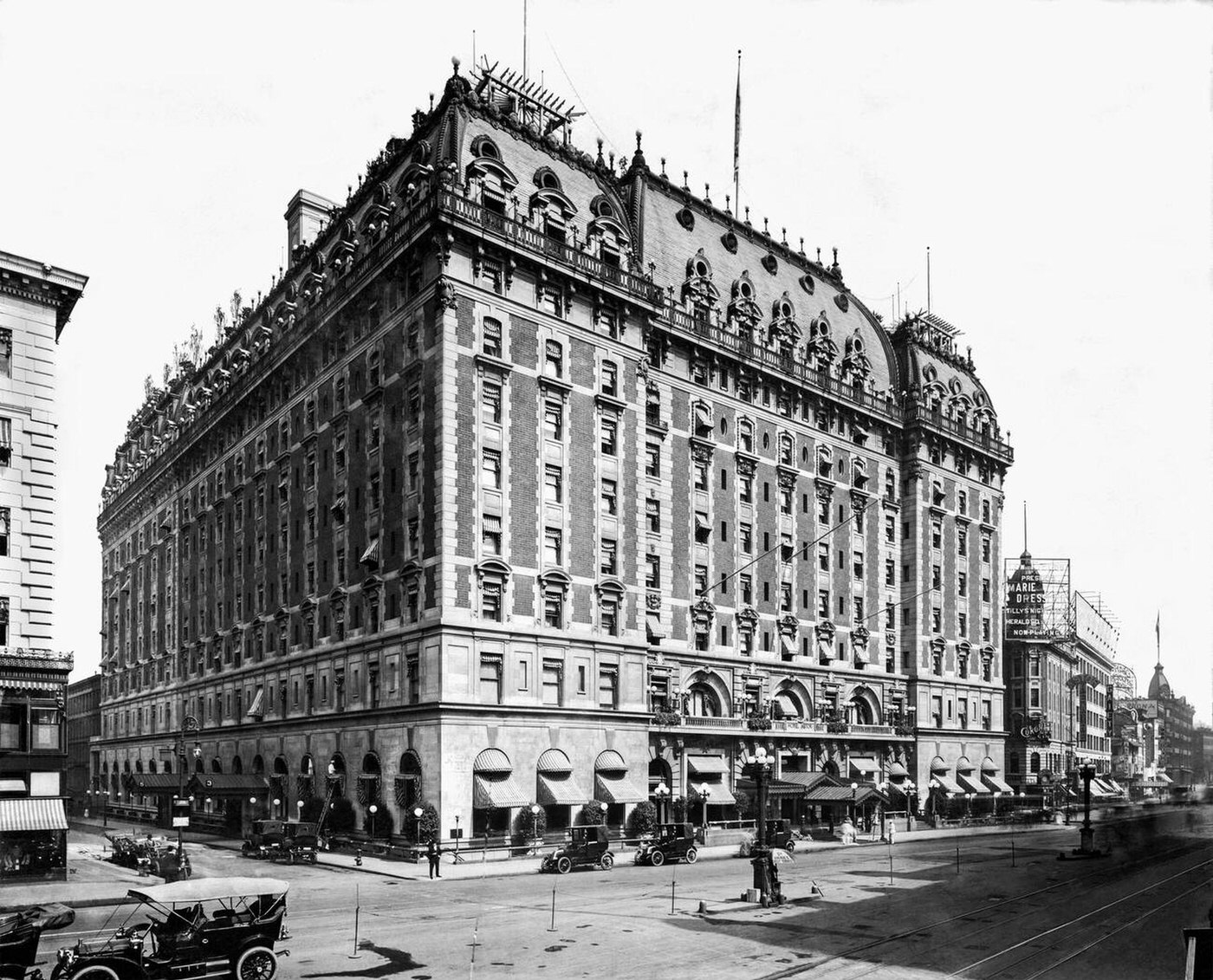
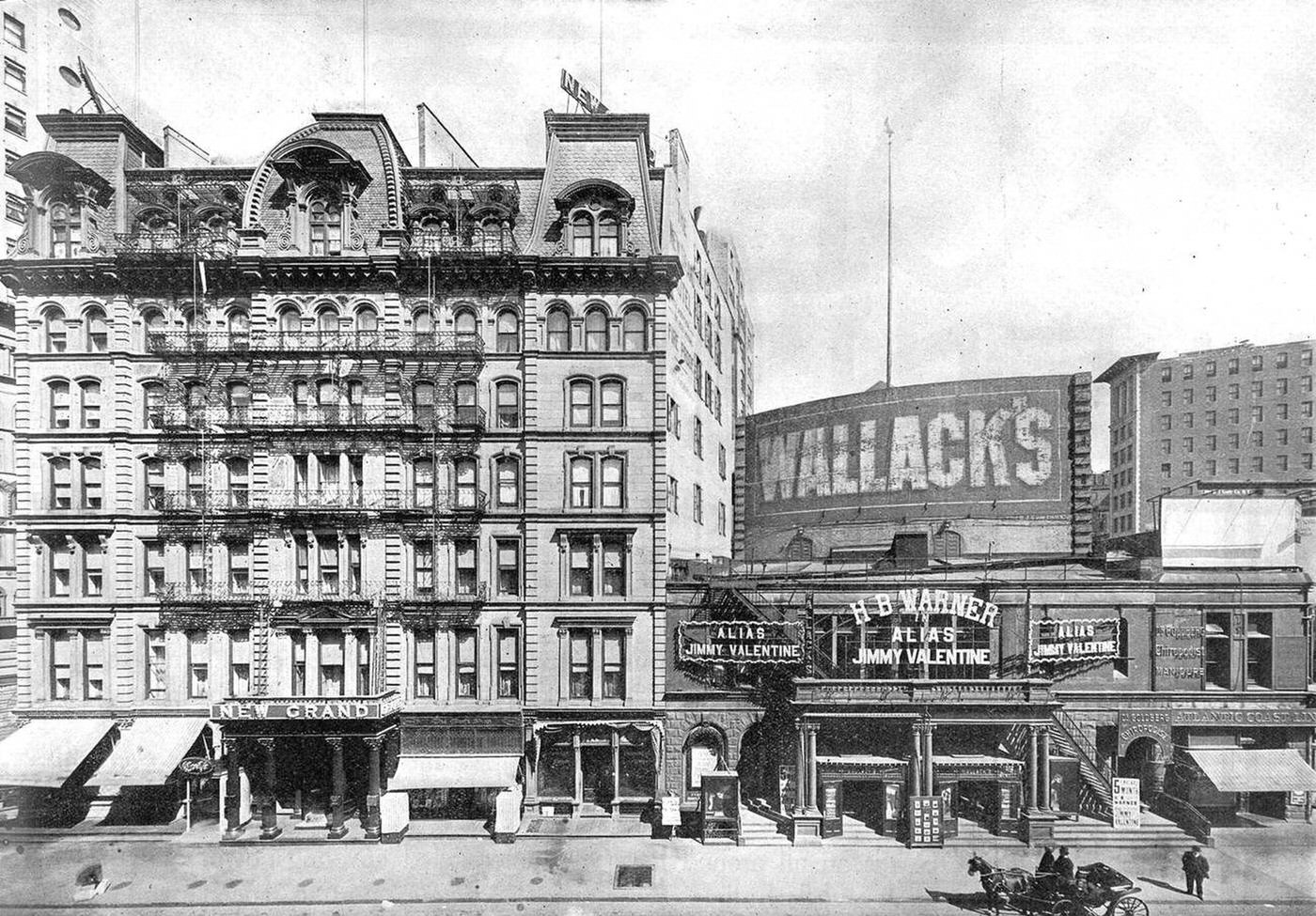
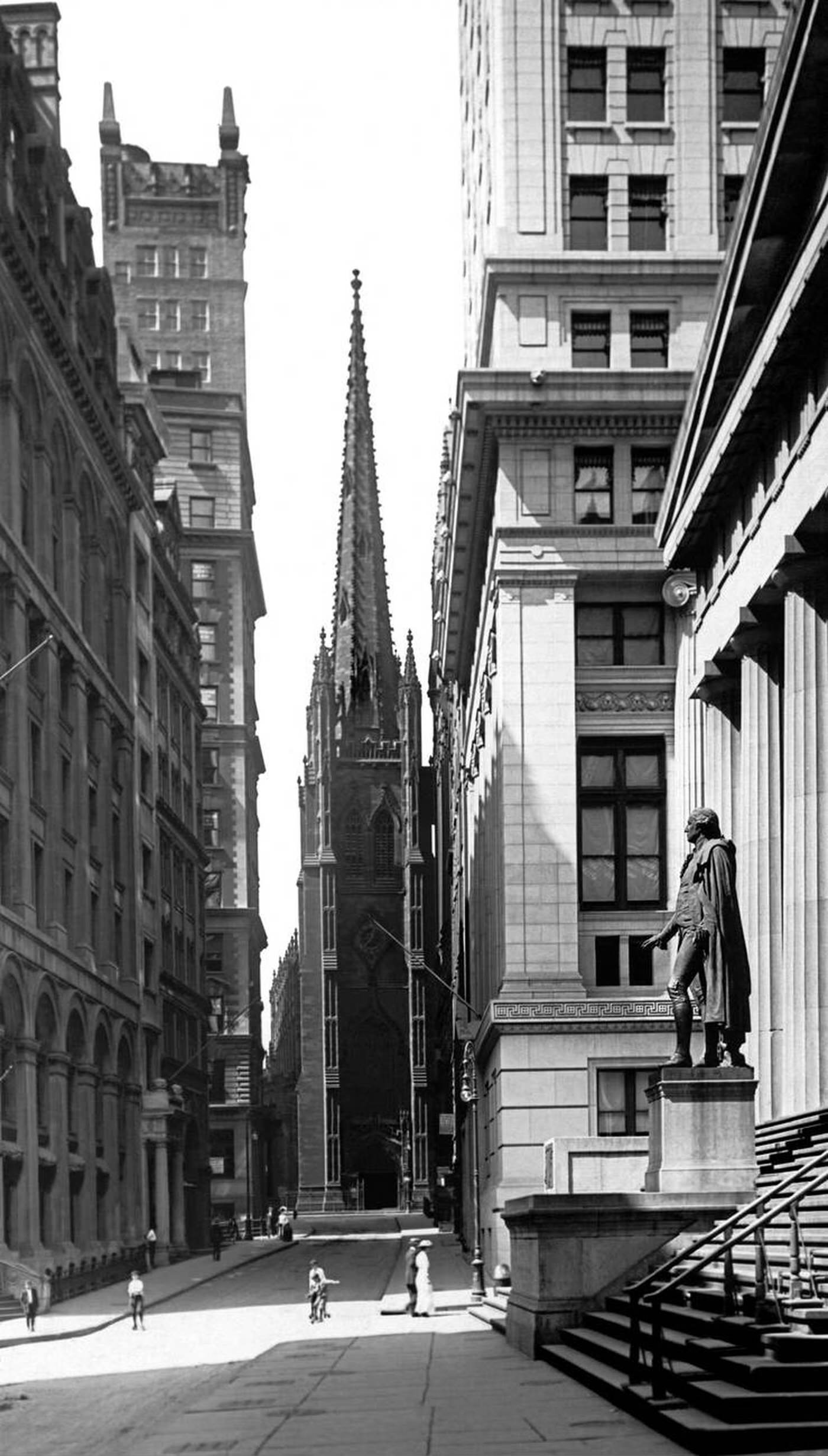
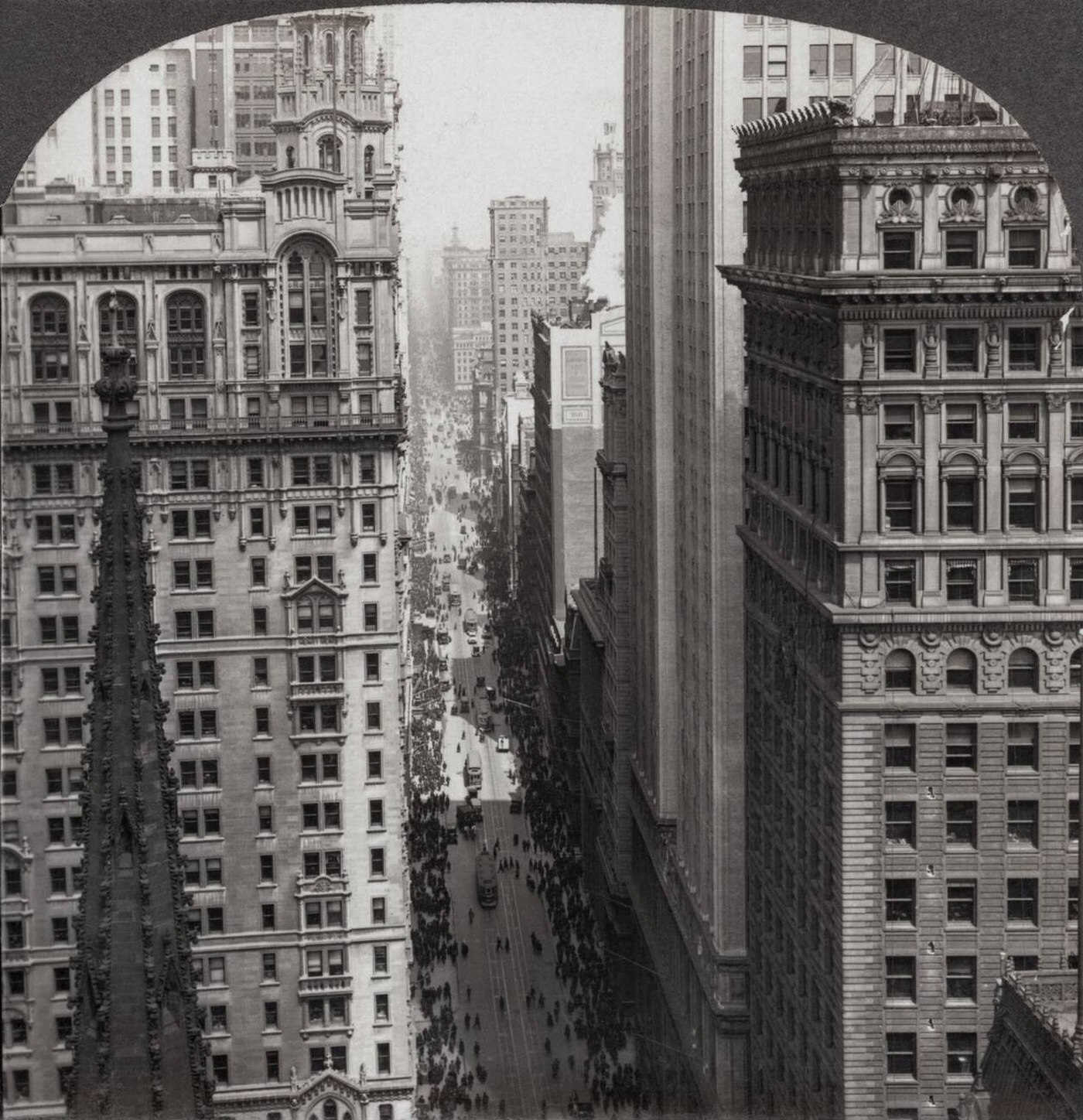
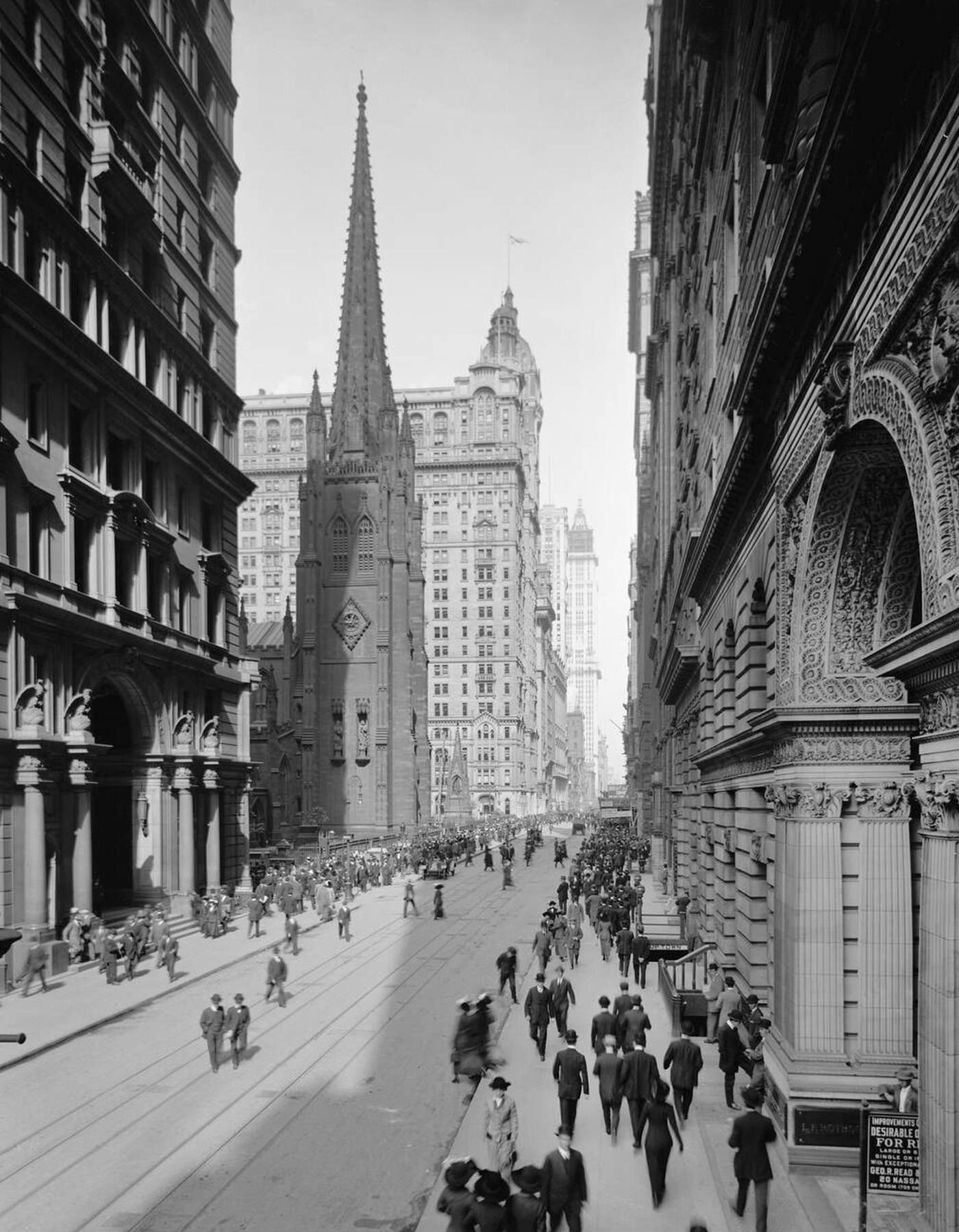
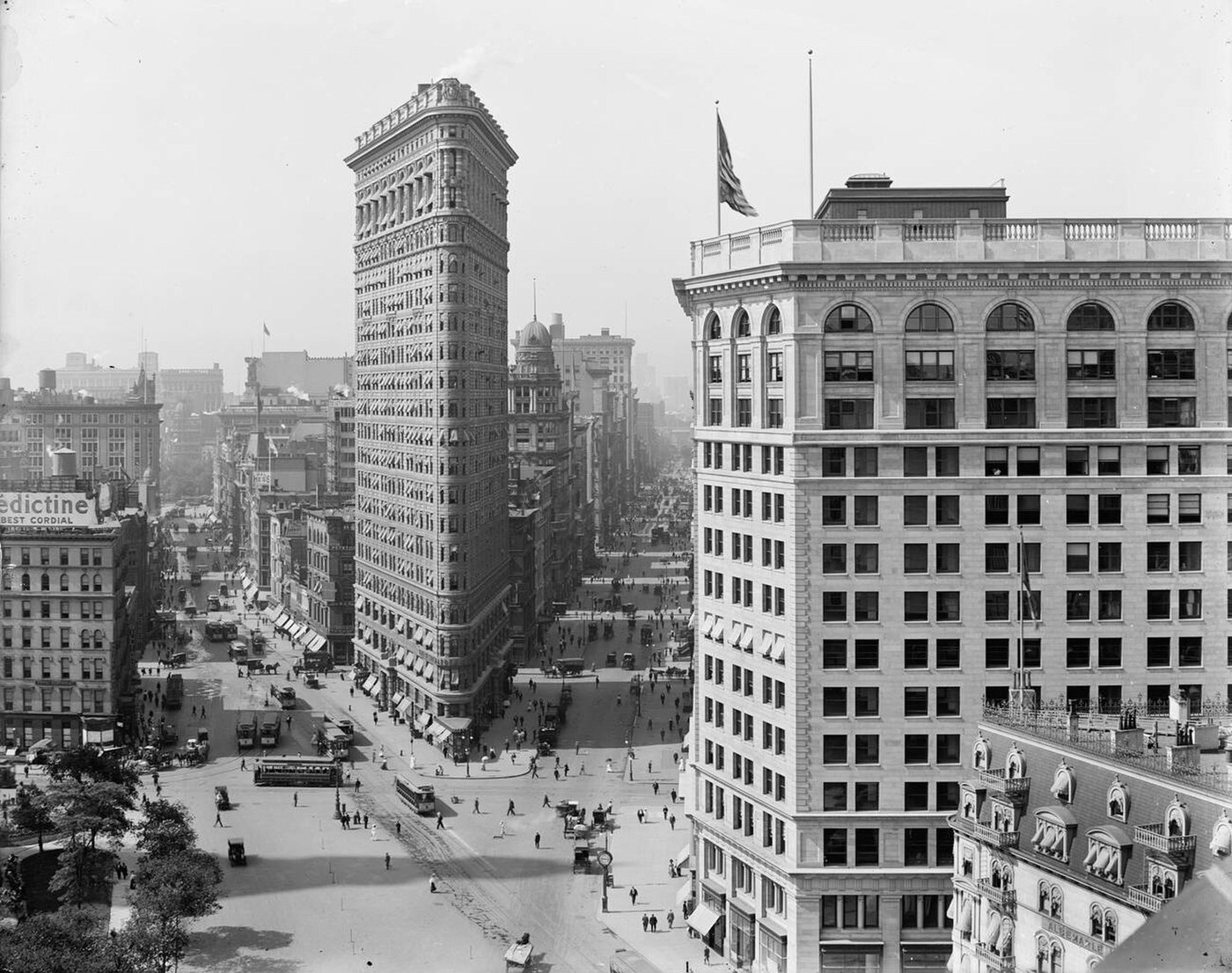
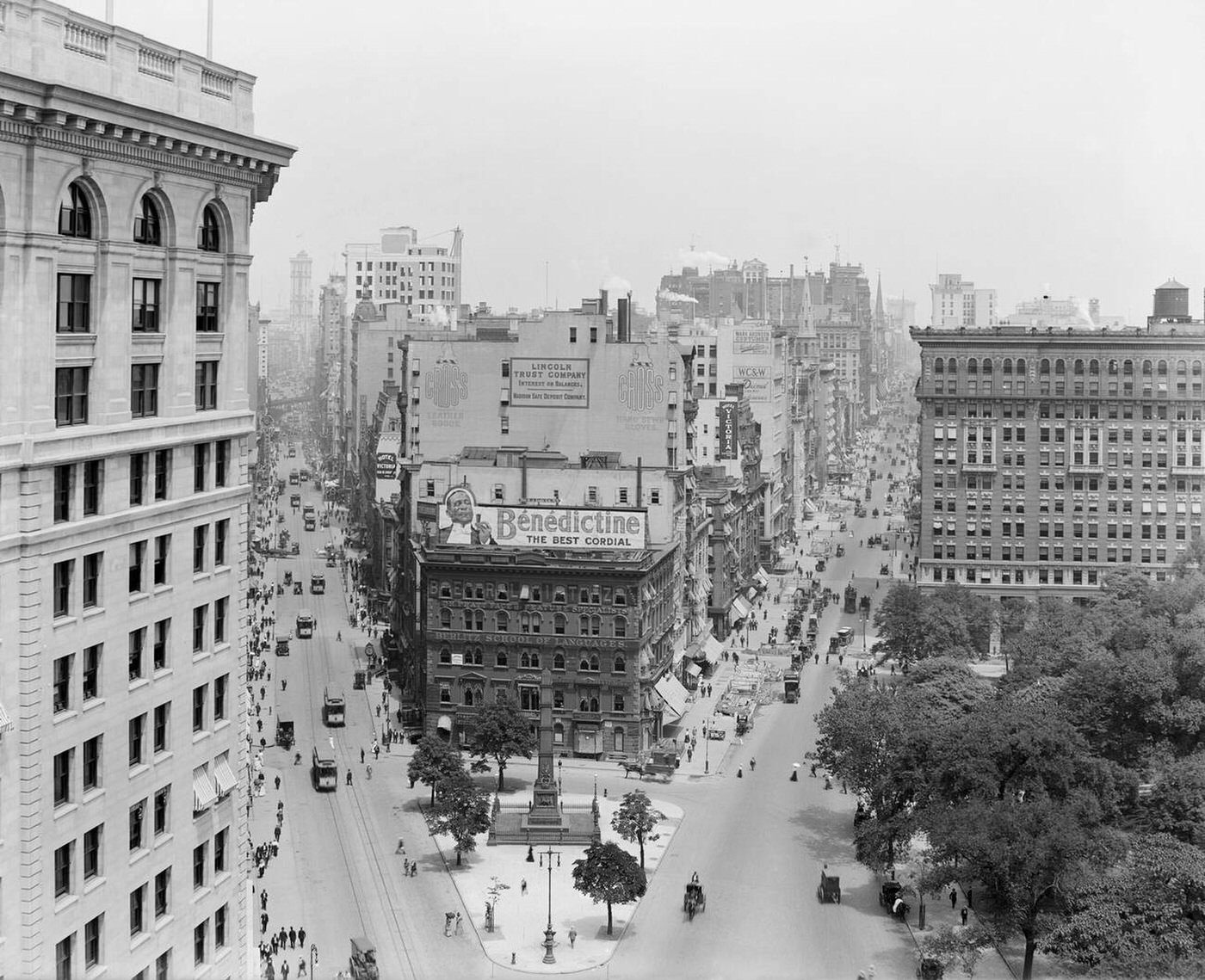

GIPHY App Key not set. Please check settings